|
The Bay of Islands Marina gave us a little treat as welcome. We had to supply our own Final Fantasy XIV. At dock, the foul weather gear gets a chance to dry out.
|
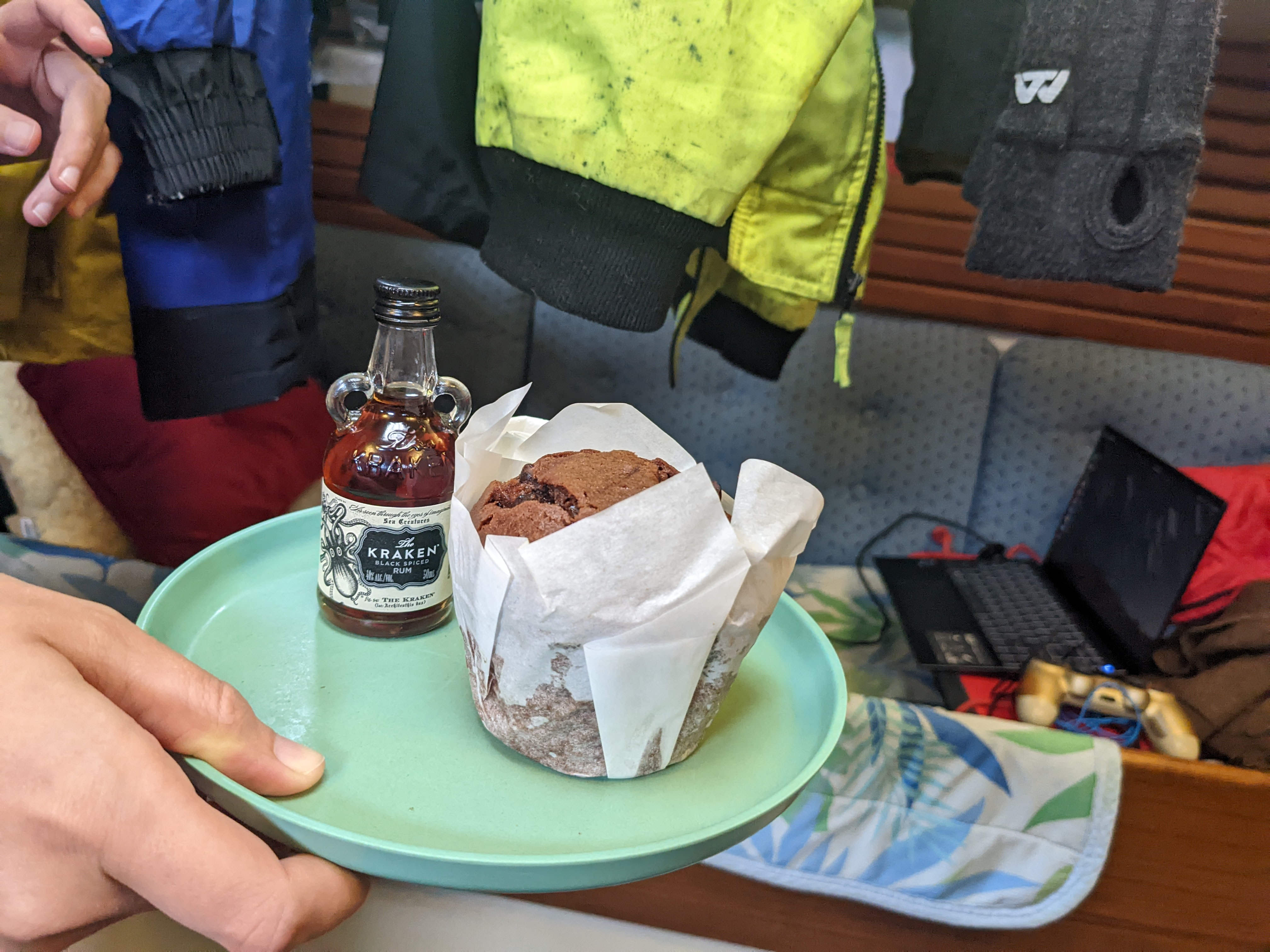
|
|
|
The Opua quarantine dock has been busy. Until quite recently, it was the only allowed entry point in the north of New Zealand. You can see we still have our running lights on from motoring into harbour.
|
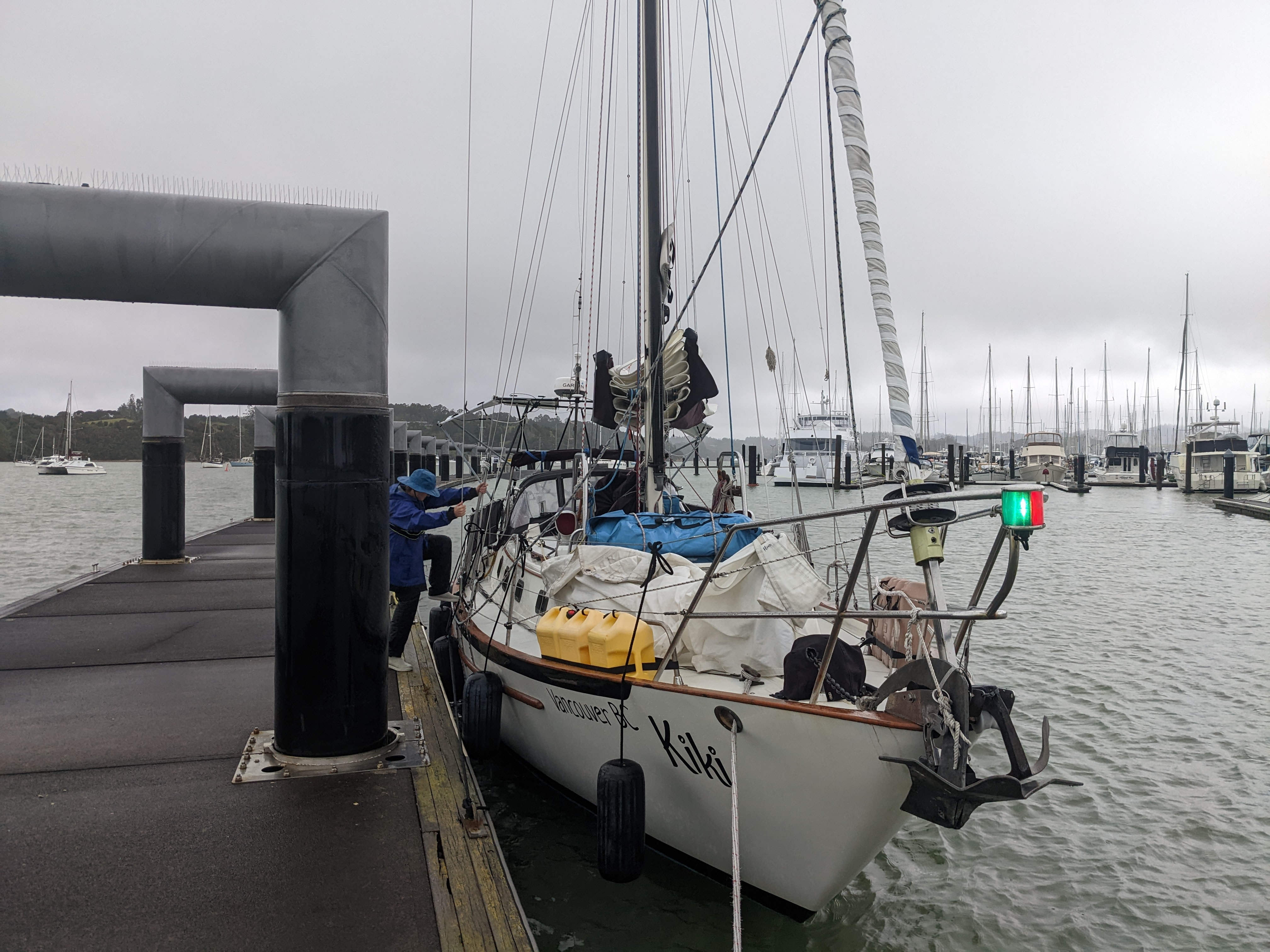
|
|
|
Our first sighting of New Zealand - "Land Ho!". After over a week of dry beautiful weather with fair winds and following seas, we got drenched for the last few hours of our passage from Tonga.
|
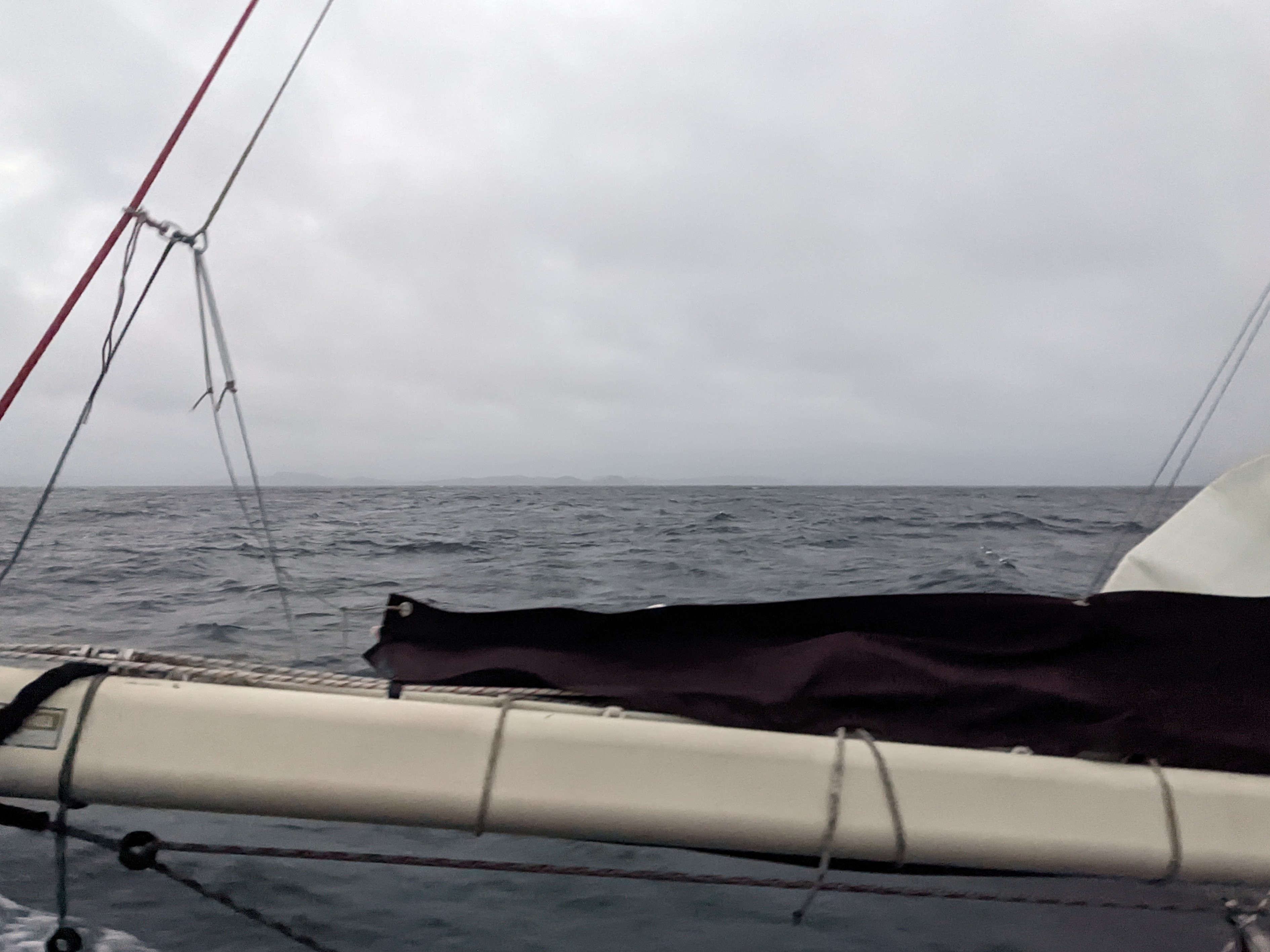
|
|
|
Cooking is one of the most dangerous parts of sailing, with the boat bouncing along the waves. Brooksie has kept us well fed for thousands of miles even so.
|

|
|
|
A couple days out from New Zealand, we were treated to a lovely sunrise. Stars, the milky way, and planets have been spectacular... but hard to photograph from a moving boat.
|
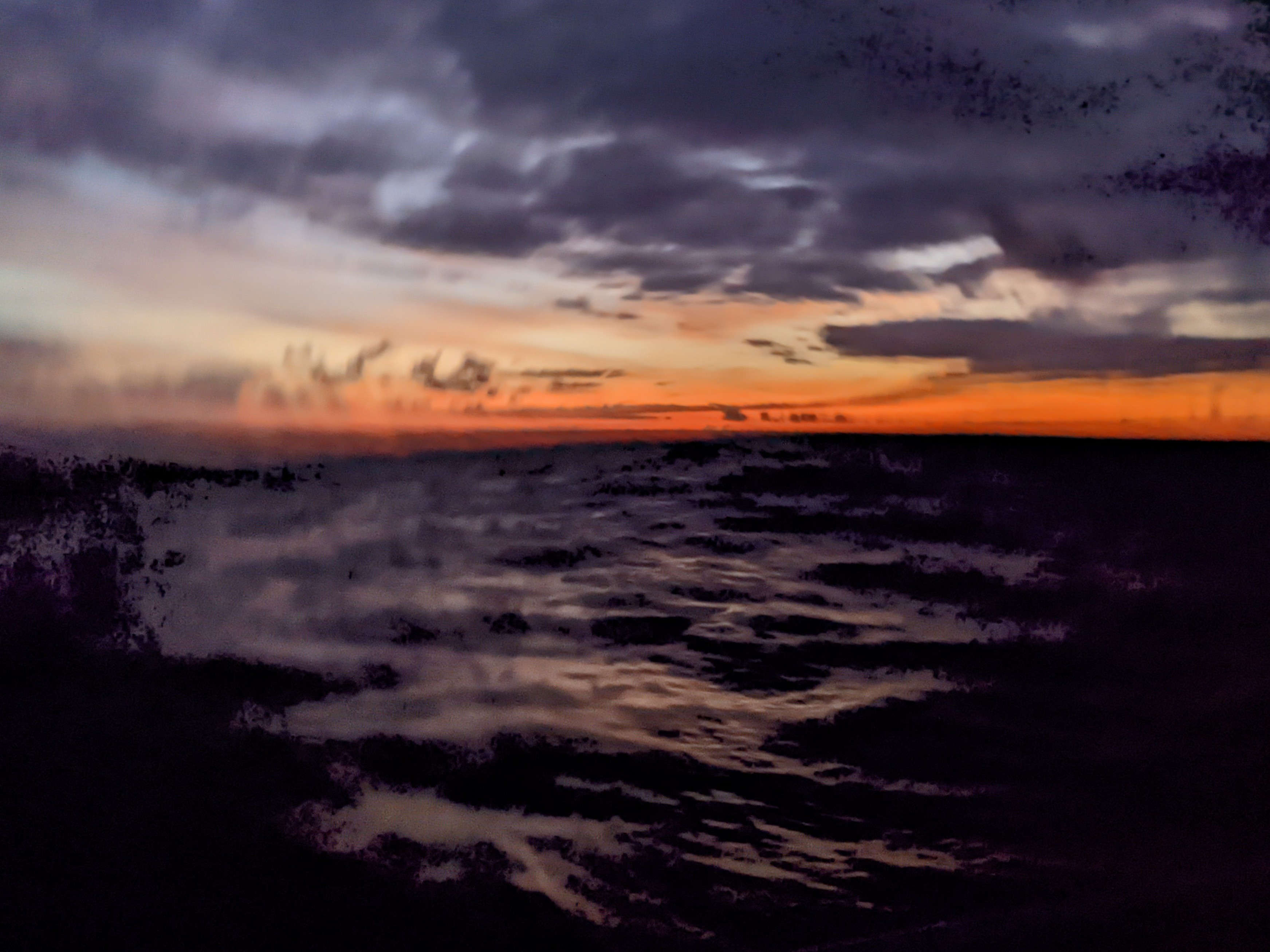
|
|
|
Some of the islands in the Vava'u archipelago don't invite anchoring and visiting. In the before times, a sailboat charter company numbered three dozen different spots in the island group for anchoring or mooring. Yachties still use those numbers to talk about places here.
|
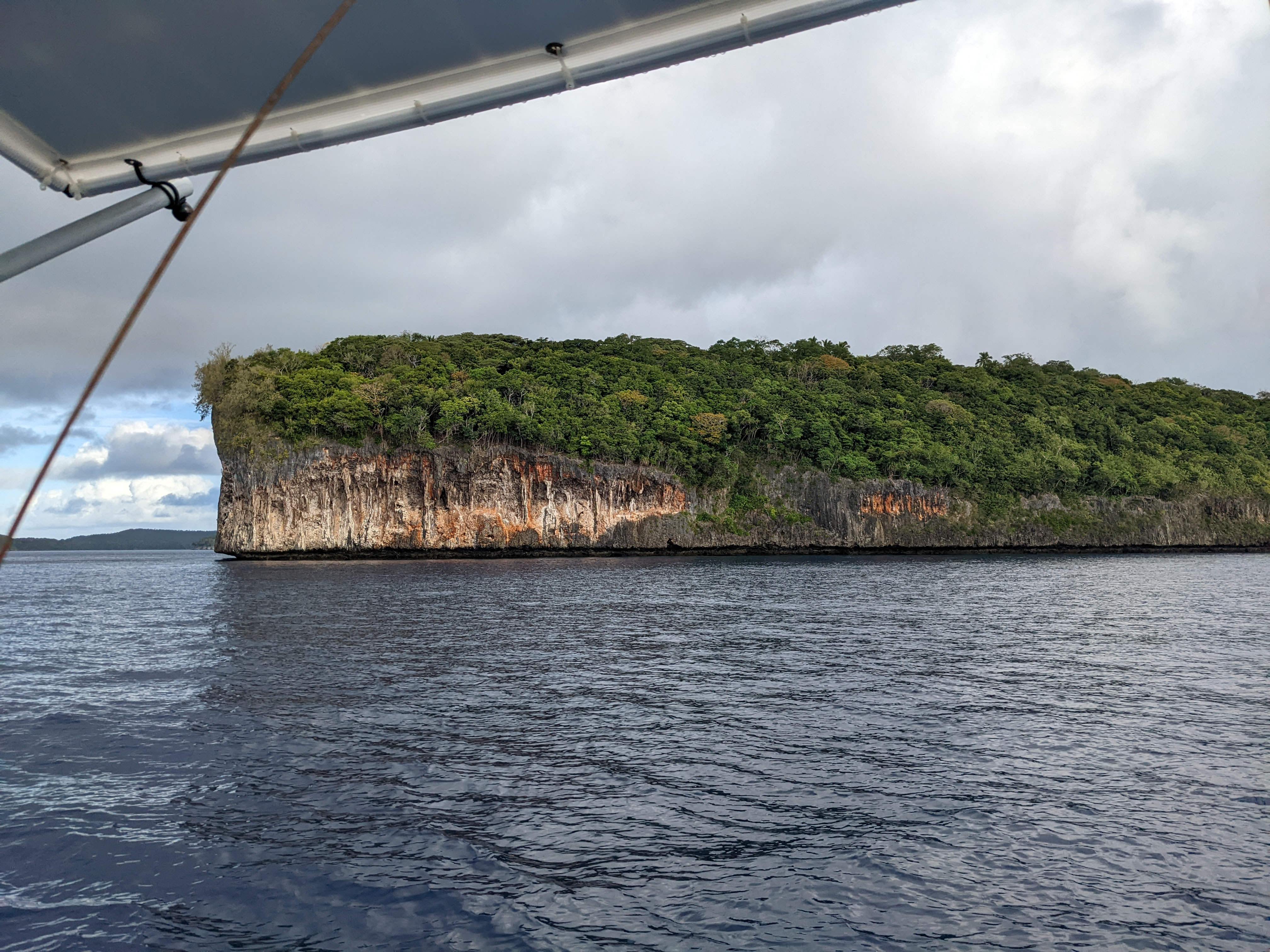
|
|
|
Yet another boat at a lovely anchorage in Vava'u.
|

|
|
|
Yet another boat at a lovely anchorage in Vava'u.
|
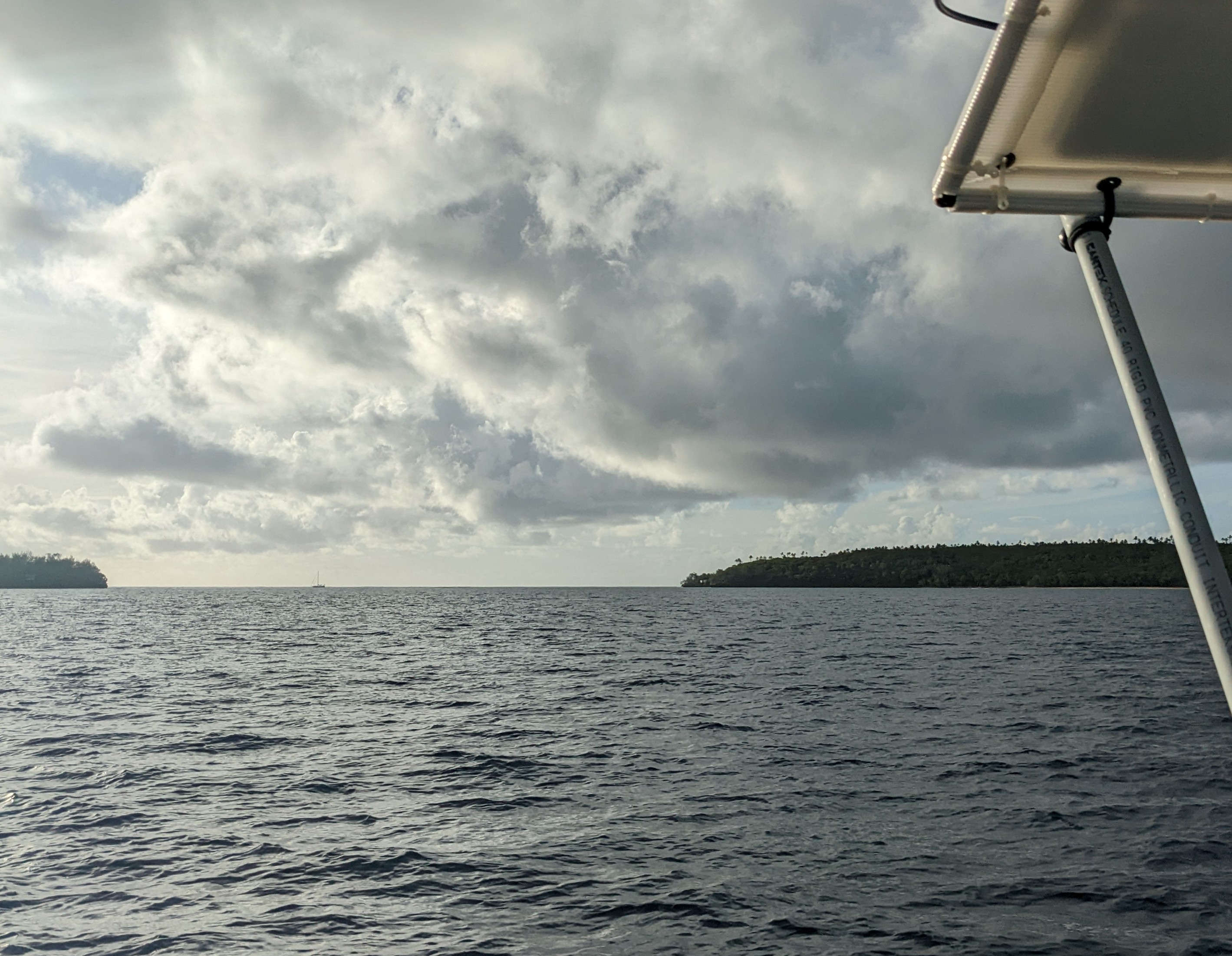
|
|
|
The Vava'u archipelago has dozens of lovely spots to anchor.
|
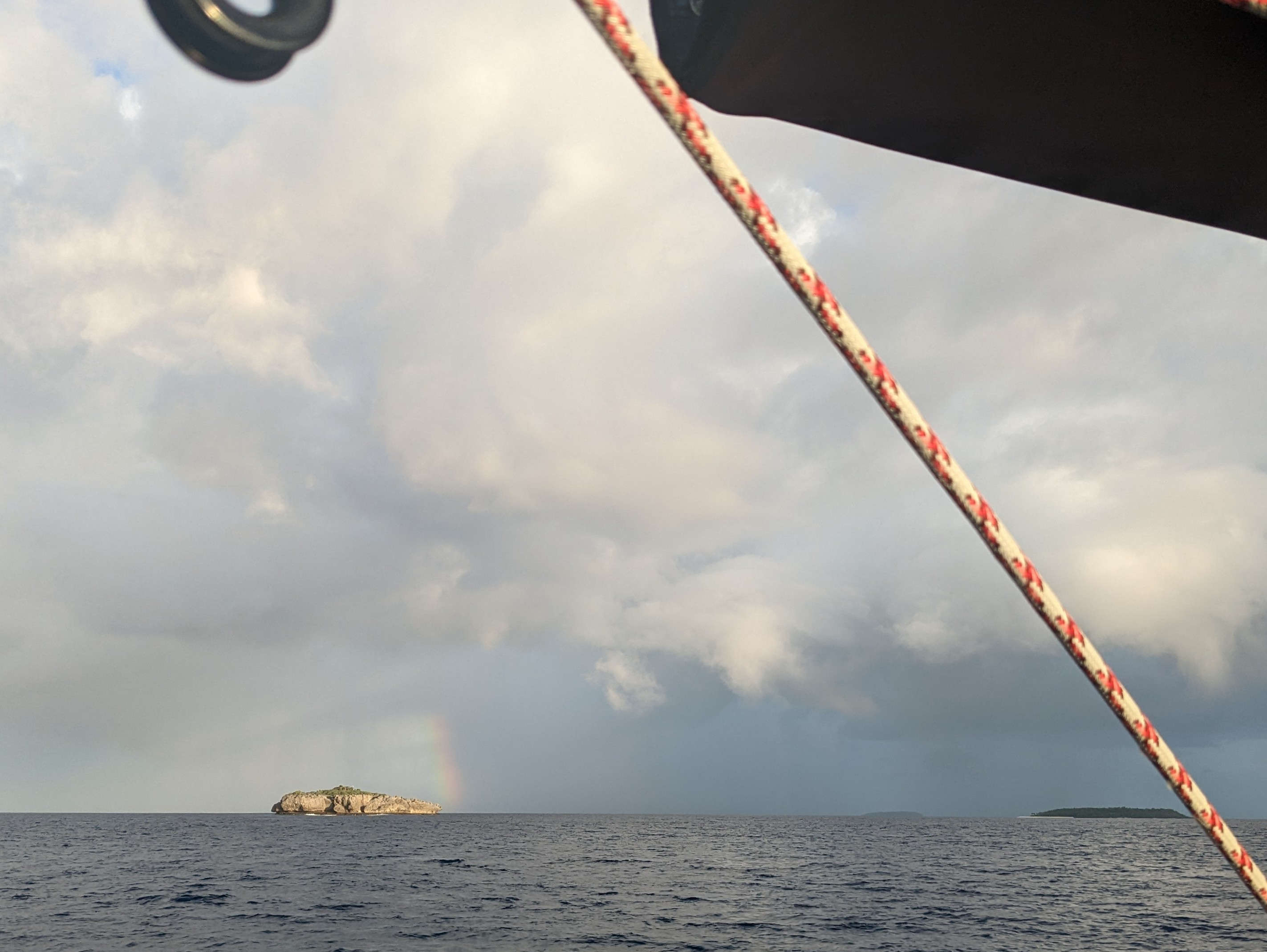
|
|
|
Vava'u is famous for the humpback whales that visit every year. This one caught us by surprise. We saw a couple more breaching, too far to catch photos. We didn't see any young whales (many are born here).
|
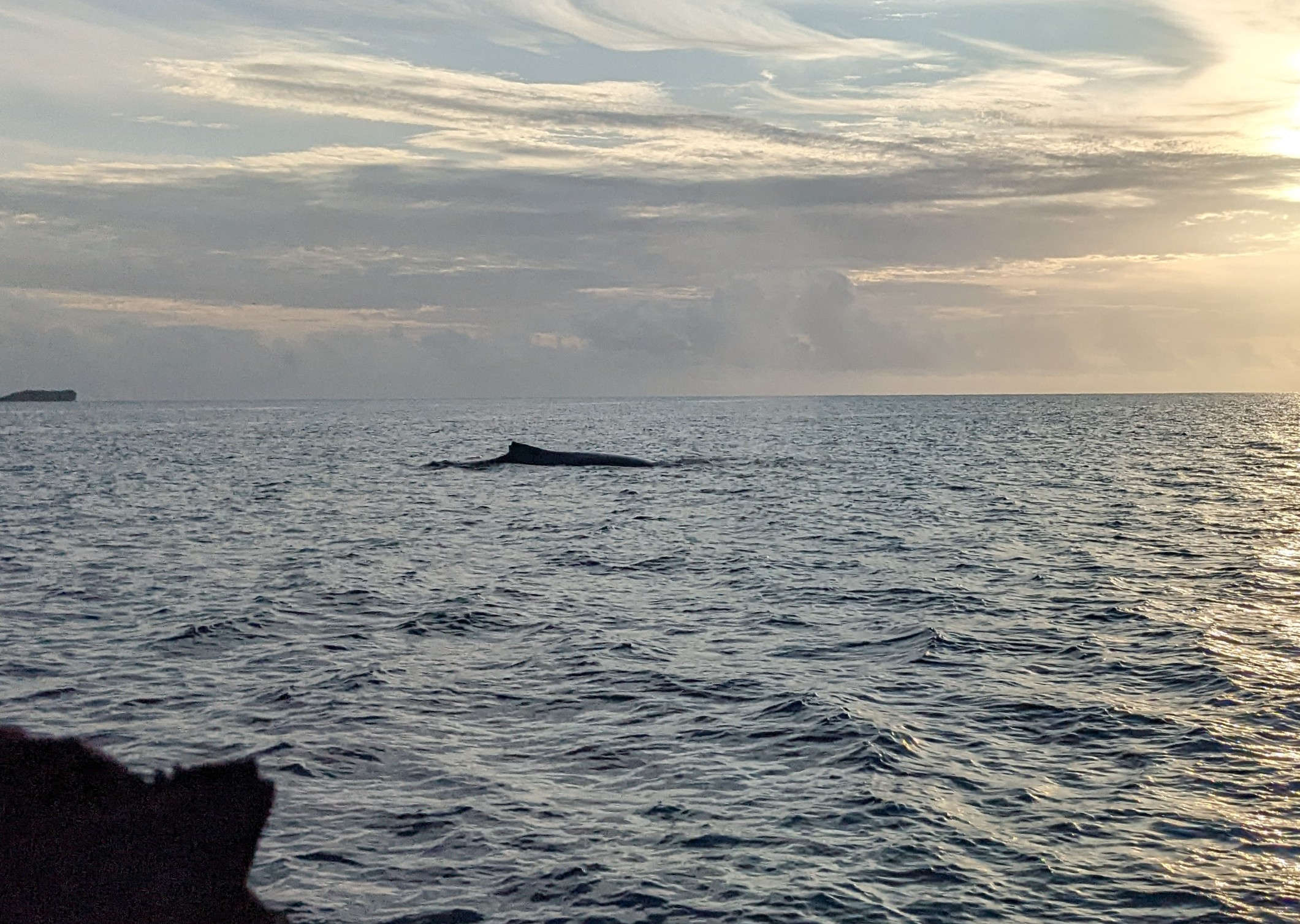
|
|
|
This is how fouled our prop got by the time we left Samoa. The Apia bay was "lively", and we never got our cruising permit to leave the bay and visit the rest of the country from the government.
|
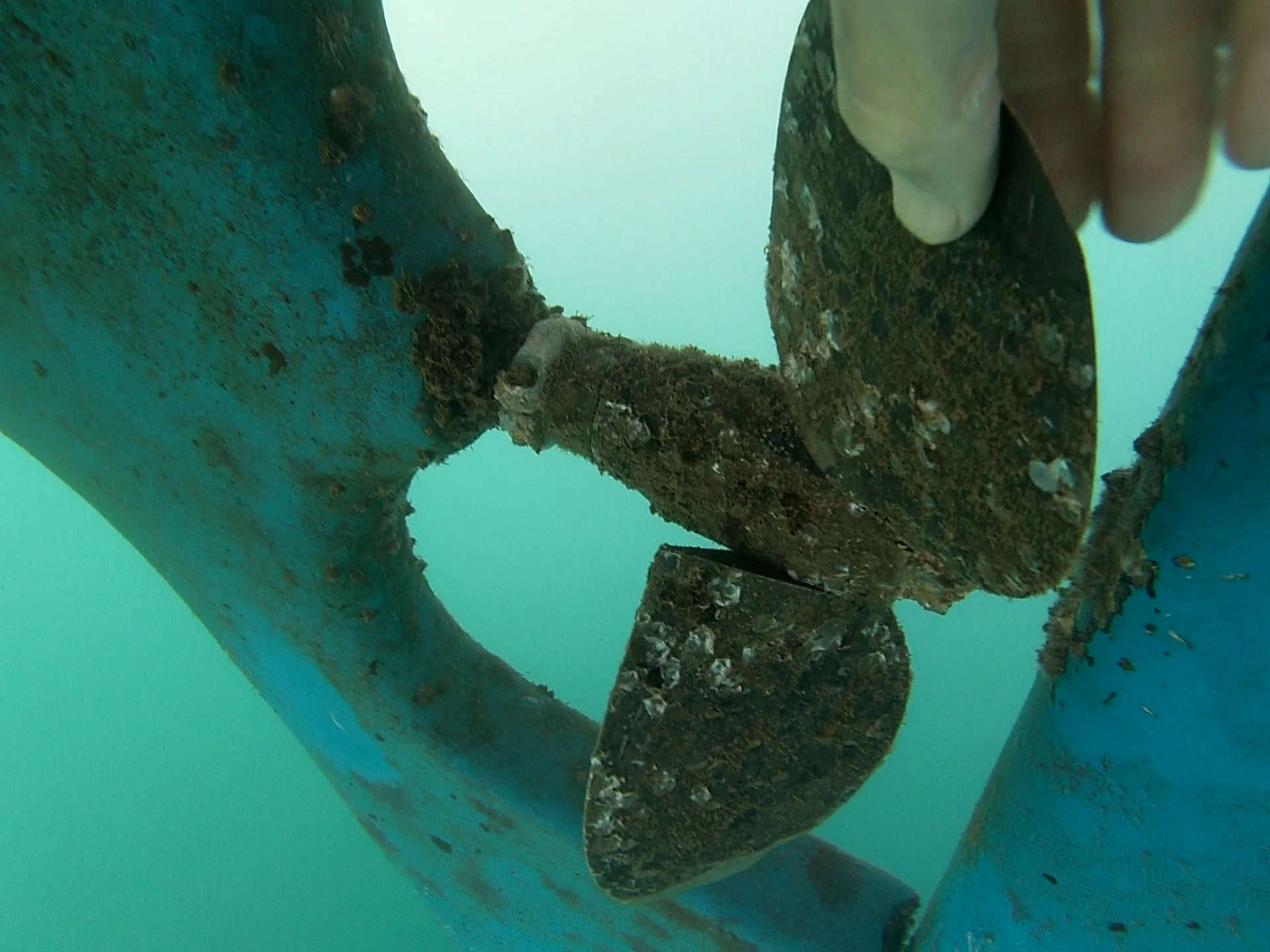
|
|
|
Brooksie's elbow grease cleaned up our feathering prop. We noticed much better performance with the cleaner propellor ;-)
|

|
|
|
Kiki looks great with two fresh coats of anti-fouling paint. The boatyard let us live up the top of the ladder while the work was done. Comforts of home!
|
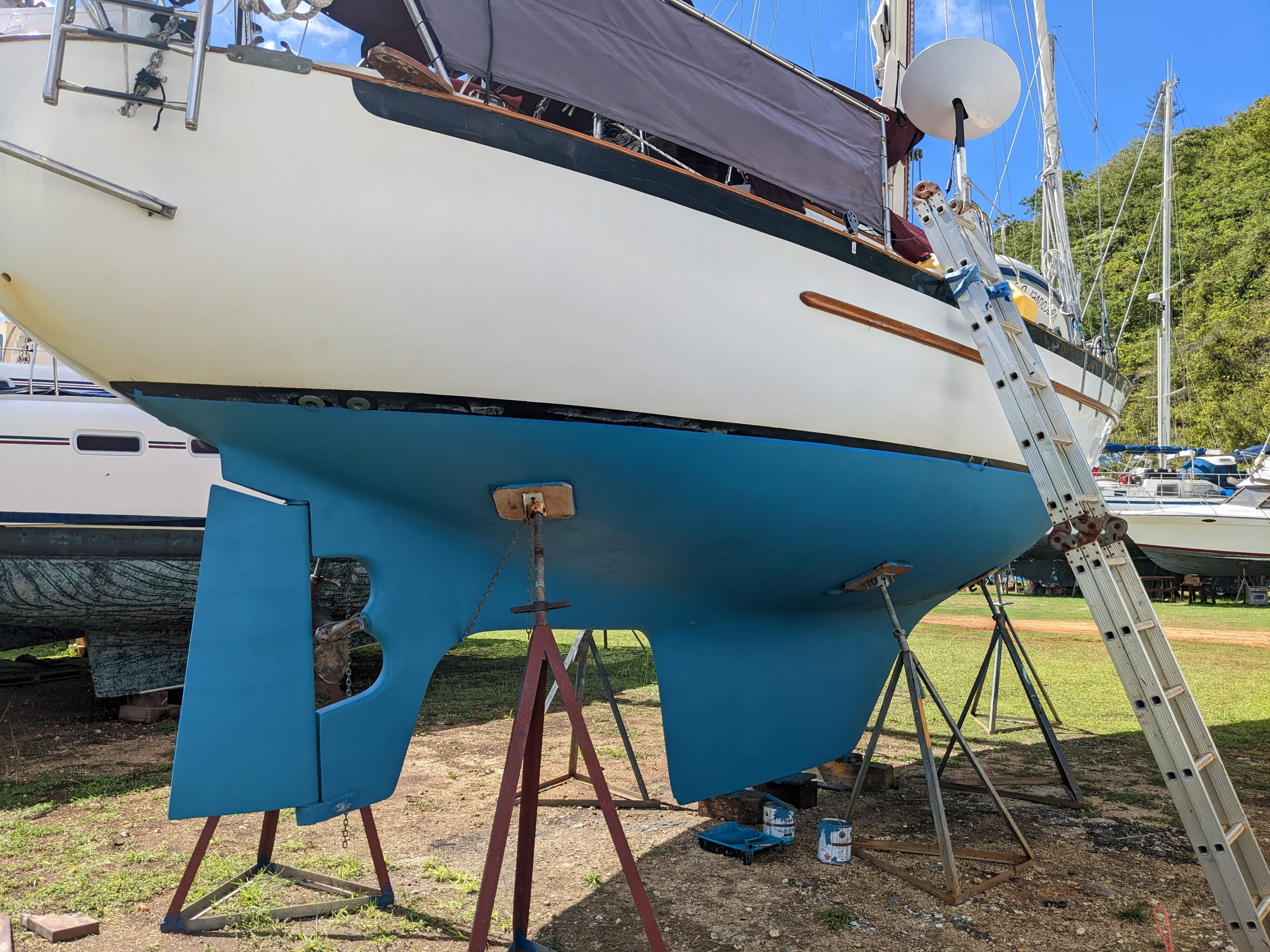
|
|
|
Kiki comes up out of the water for some needed maintenance. The Boatyard was great for us. The bottom cleaning and paint got us into picky picky New Zealand with no problems! Folks from a youtube channel we follow unluckily had their boat stuck here for COVID :(
|

|
|
|
Here's a video intro to why we'll be staying in Vava'u for a while. When we upped anchor from Apia harbor, we were blown onto the hard reef there. Blown slowly enough that we didn't notice until it was too late, but fast enough to do the damage you can see in the video. Liking and subscribing will have no impact on our nonexistent revenue from youtube.
|
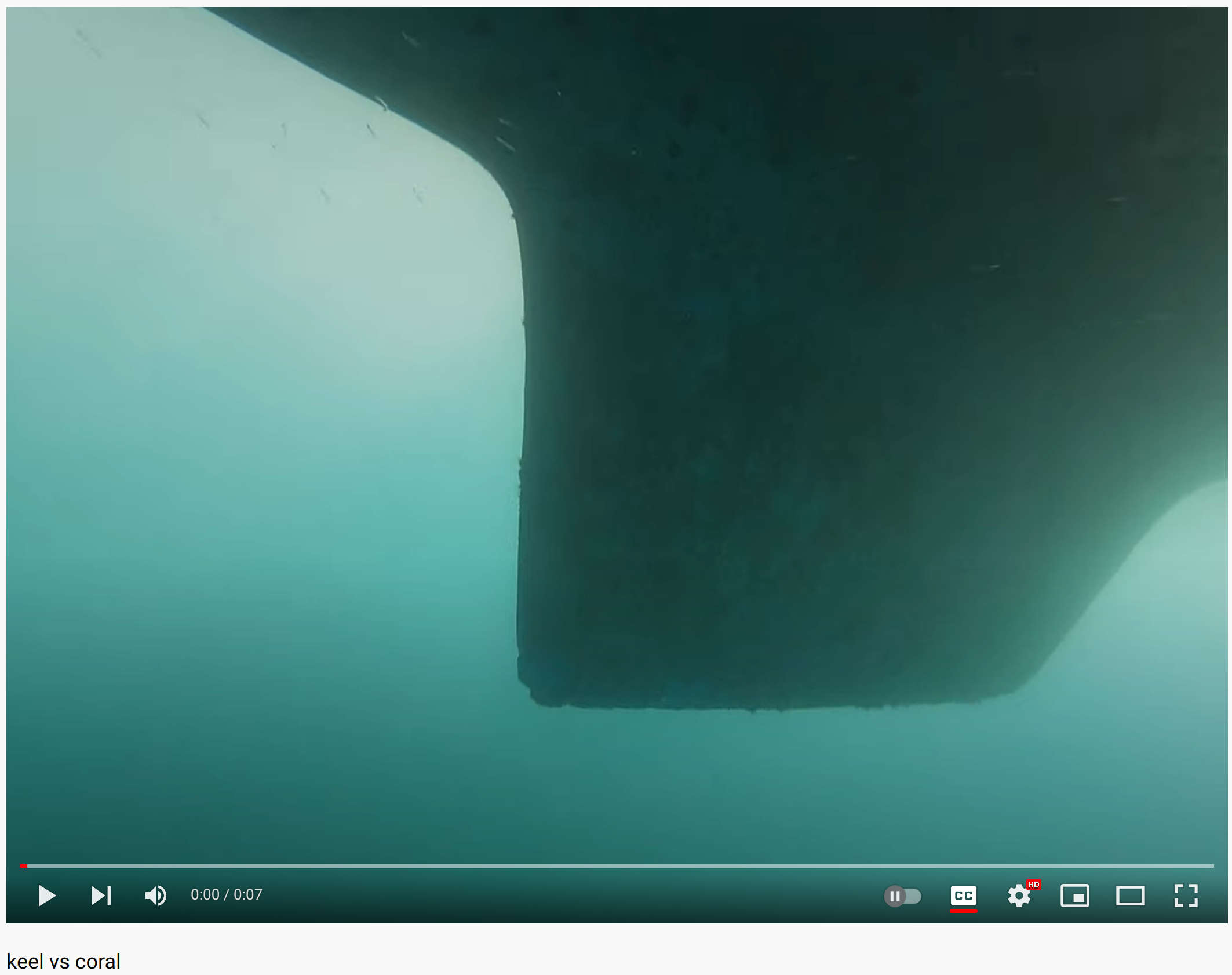
|
|
|
Our friends on Ten Gauge and we were the first and second boats to sail into Tonga after COVID closure. Over the next few days, several more boats have arrived, and the Bay of Refuge is looking busy to us.
|
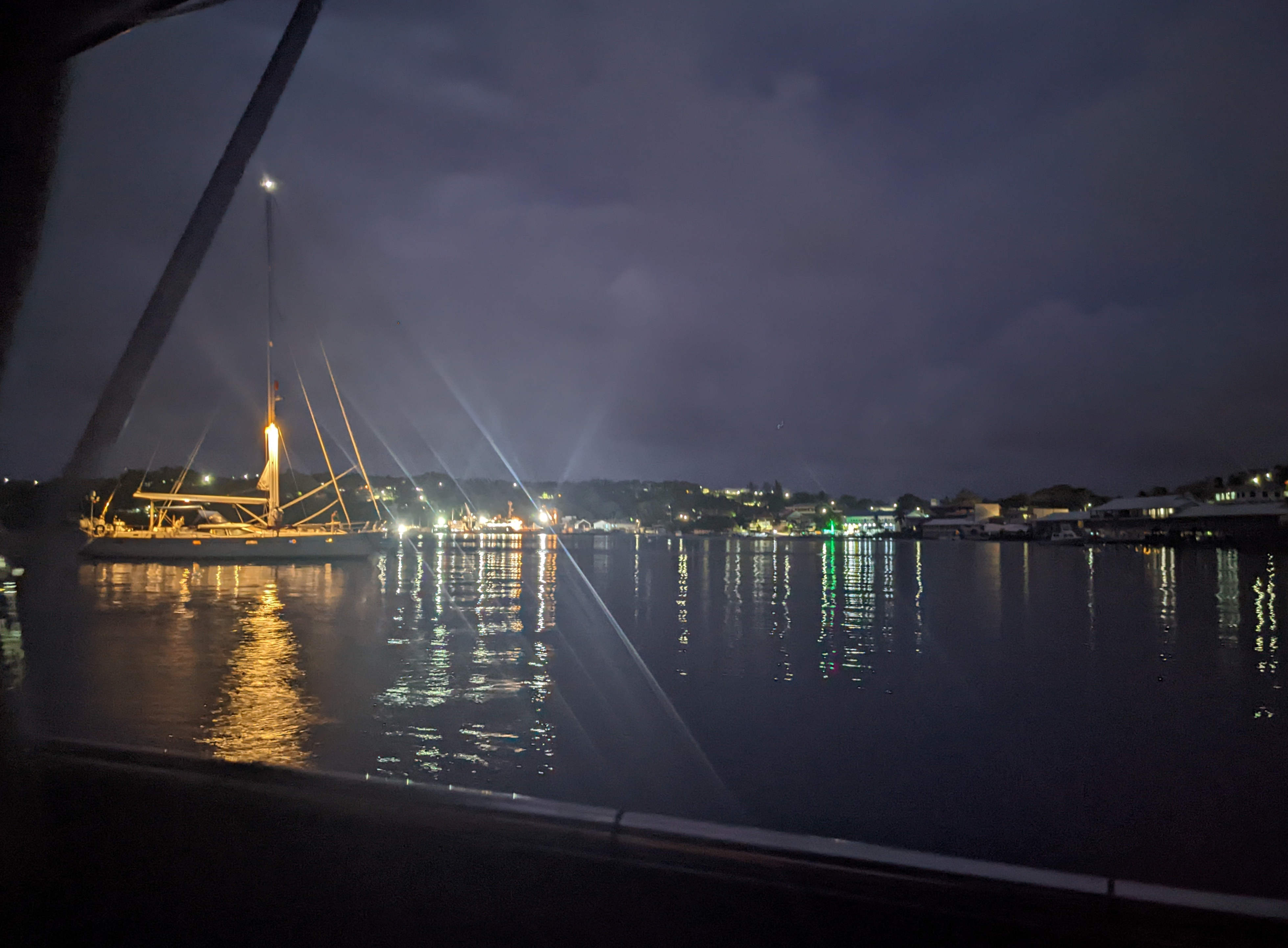
|
|
|
This view of Kiki and a couple other boats is courtesy of the Deli, run by a couple Canadian expats. We arrived here just in time to enjoy their delicious Thanksgiving Special!
|
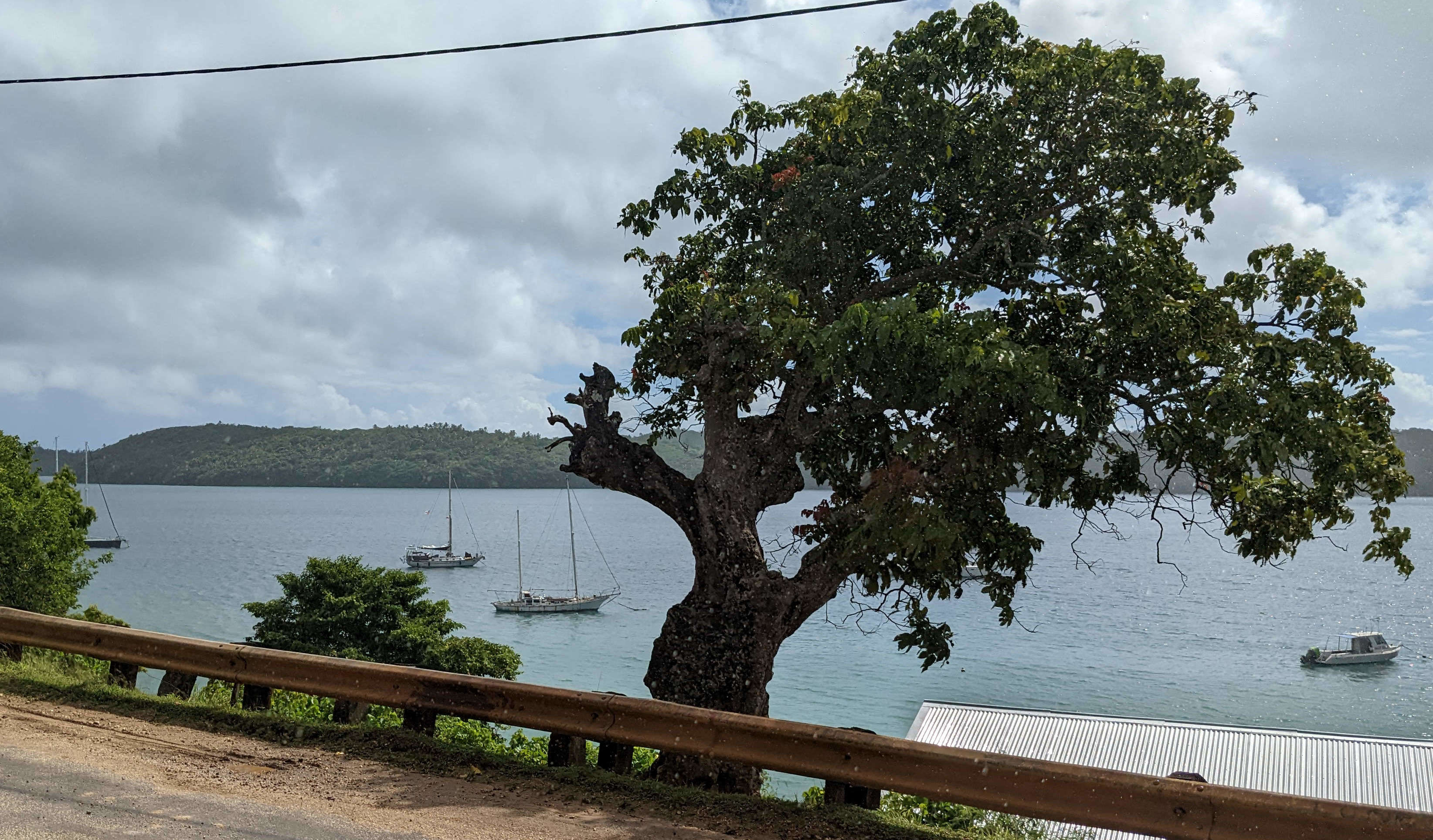
|
|
|
The Bay of Refuge is thoroughly protected from ocean waves, and well protected from winds. We found the bay to be calmer than Santa Barbara harbour marina! We could tolerate a little less noise from the many local roosters.
|
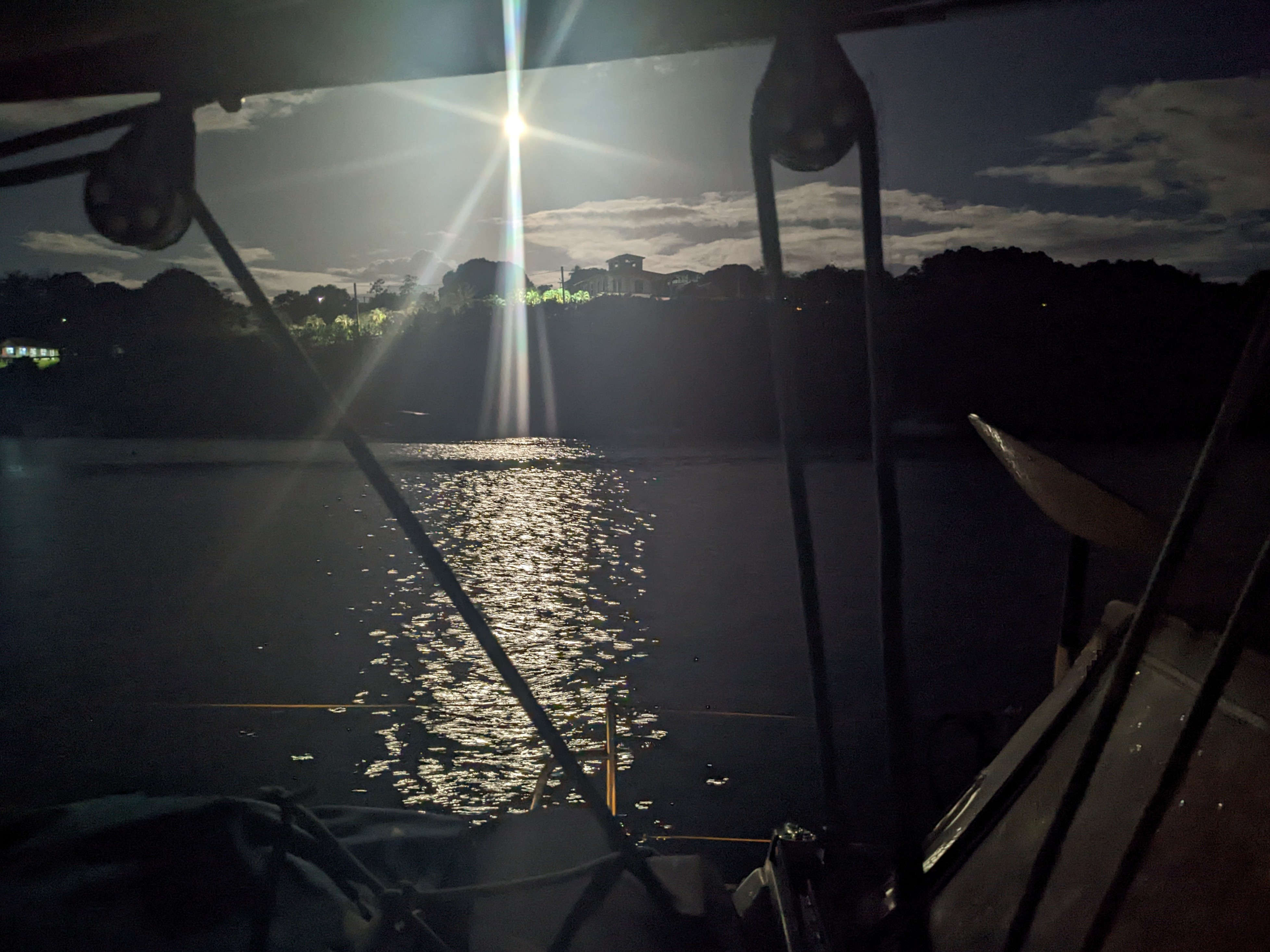
|
|
|
We safely arrived in Vava'u, Kingdom of Tonga. This map on the door of a local bar/laundry/restaurant clearly shows the marine reserves where boating is restricted. Online maps have been less useful, probably because COVID has kept people away entirely for nearly three years.
|

|
|
|
The Garmin chartplotter charts for Vava'u were useless. At one point our multi-thousand-dollar plotter told us we were on land when we were a mile away. Captain Lizann navigates us through the maze-like path to port by using better charts on her cellphone.
|
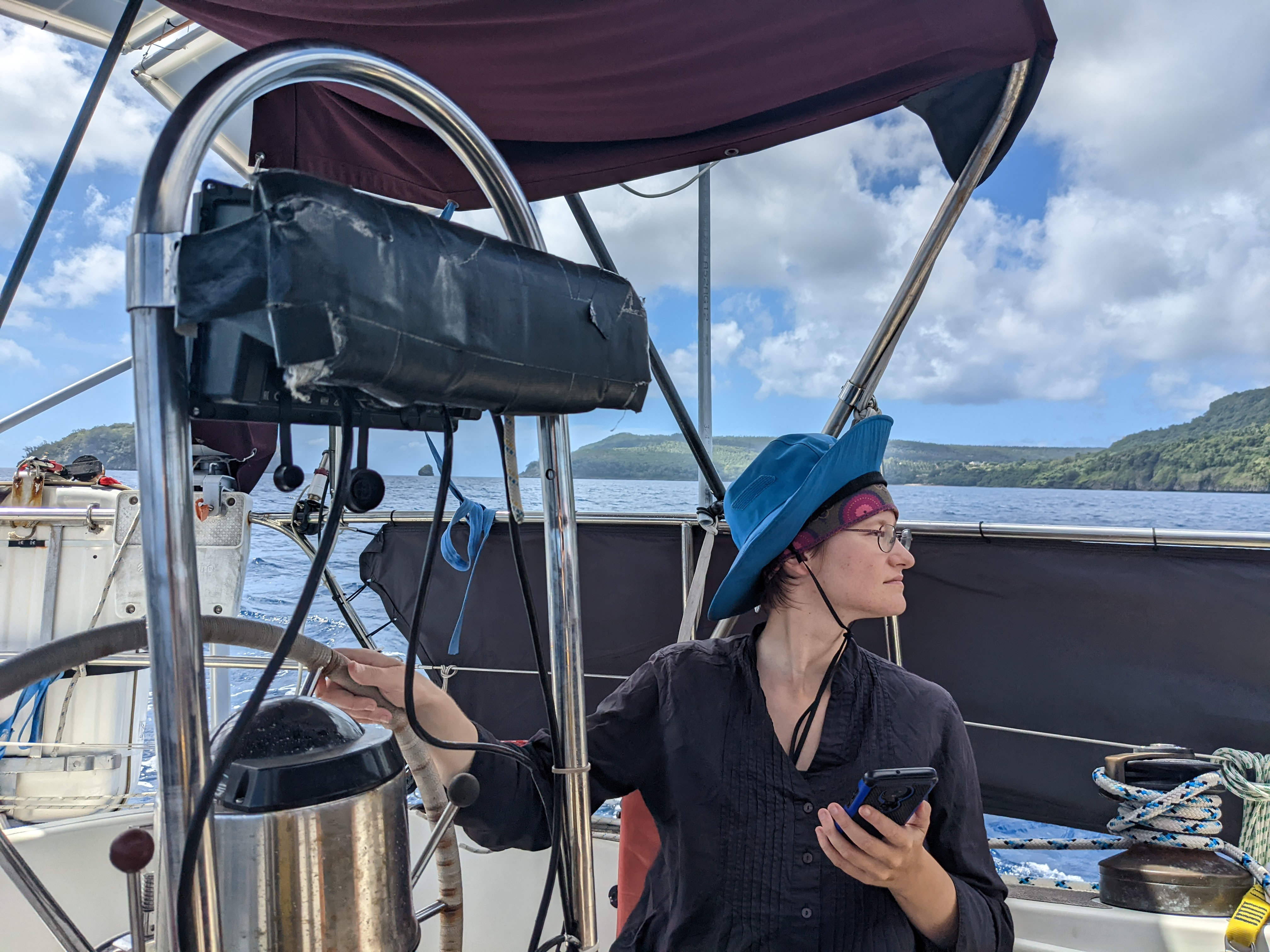
|
|
|
Land Ho! We arrived happily at Vava'u from Samoa to the north. This biggest island in the group is the northernmost; there are many tiny islands around the southern part of the group.
|
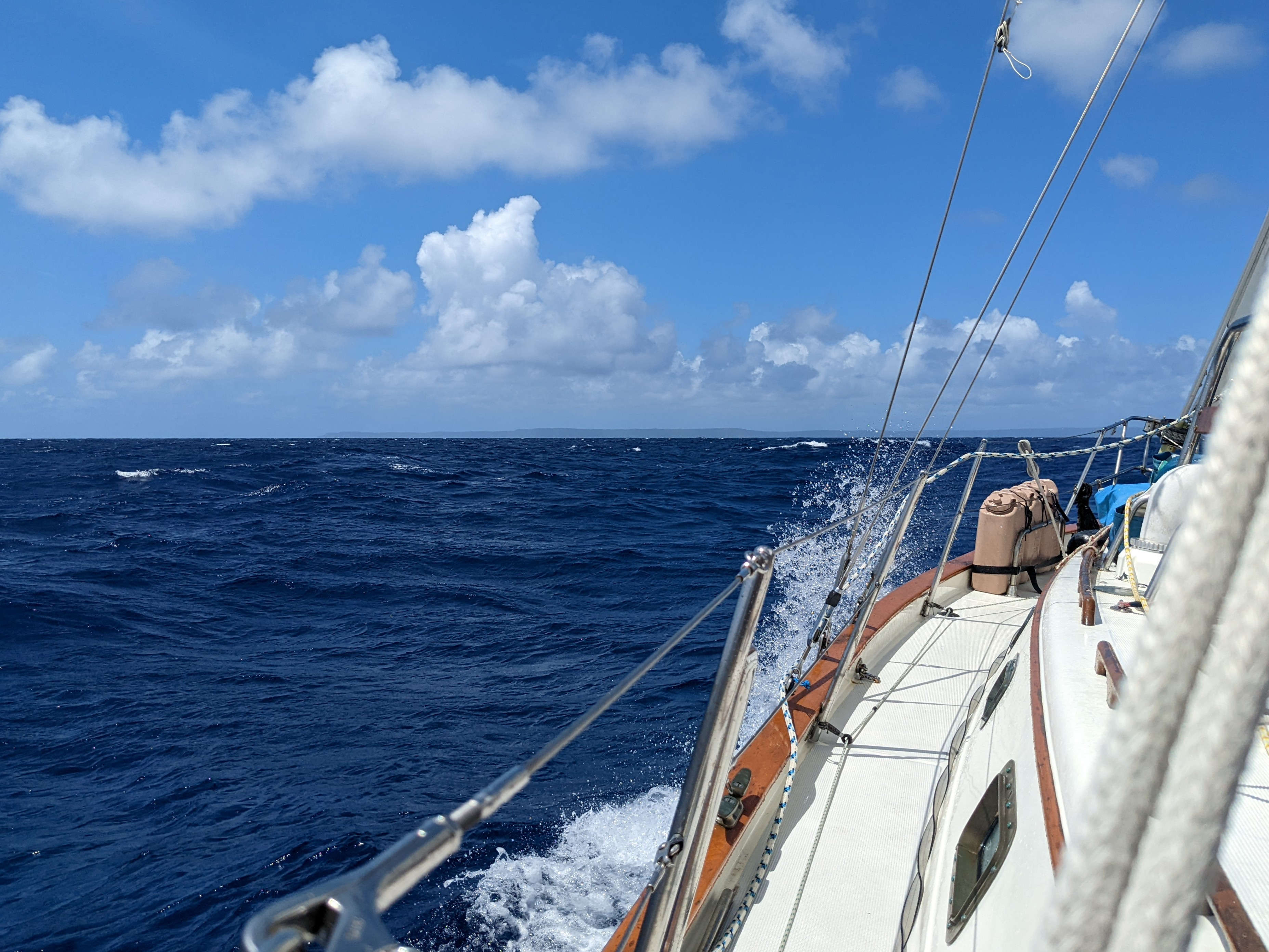
|
|
|
The sea was peaceful for our trip - though not quite as peaceful as time-exposure makes it look here ;-)
|
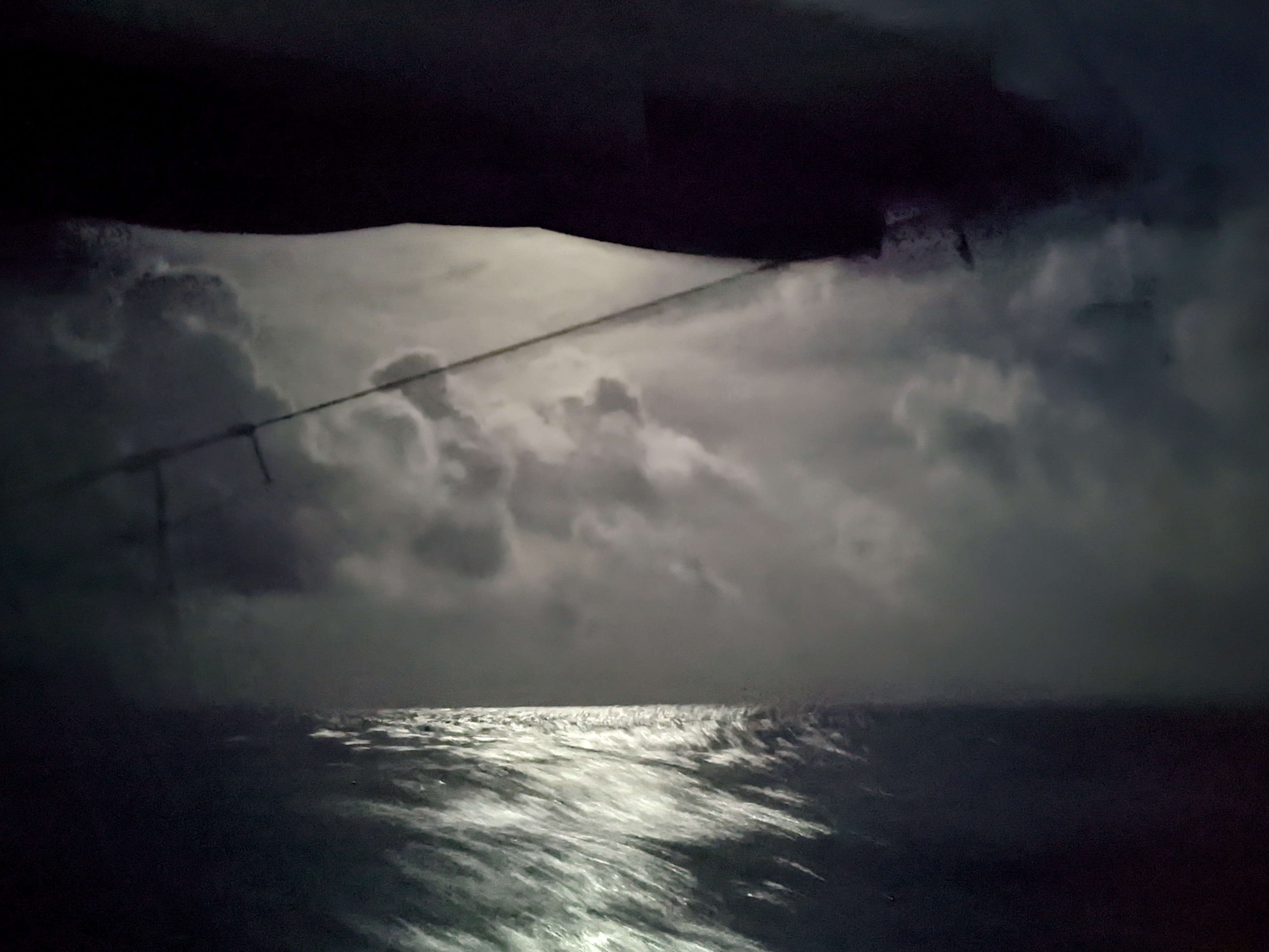
|
|
|
Here's our last view of Western Samoa for now. We upped anchor after sunset, sundowners with cruising buddies, and a couple hours prepping for cruise. We spent the night powering along the north shore of Samoa. Around dawn, we raised sails and turned south towards Tonga.
|

|
|
|
Another lovely tropical sundown. (We encourage zooming in to the scenery) Other cruisers have come and gone while we repair and petition for updated paperwork; the bay is nearly empty at the moment. We have a new passport shipping as fast as possible from Wellington (slowed by the death of the Queen and by a jet fuel shortage). We have several repairs finished since our last update - detailed below.
|

|
|
|
Here's another view of our trip so far. Every blue dot marks the location of a ship's log entry. The dots are too small to see. Our spreadsheet adds up 8800 nautical miles getting from Vancouver to Apia.
|

|
|
|
Our orginal genoa needed a lot of stitching after 8800 nautical miles. Clark spent much of a week on the foredeck, repairing the zigzag stitches that no-one on the island could do for us.
|
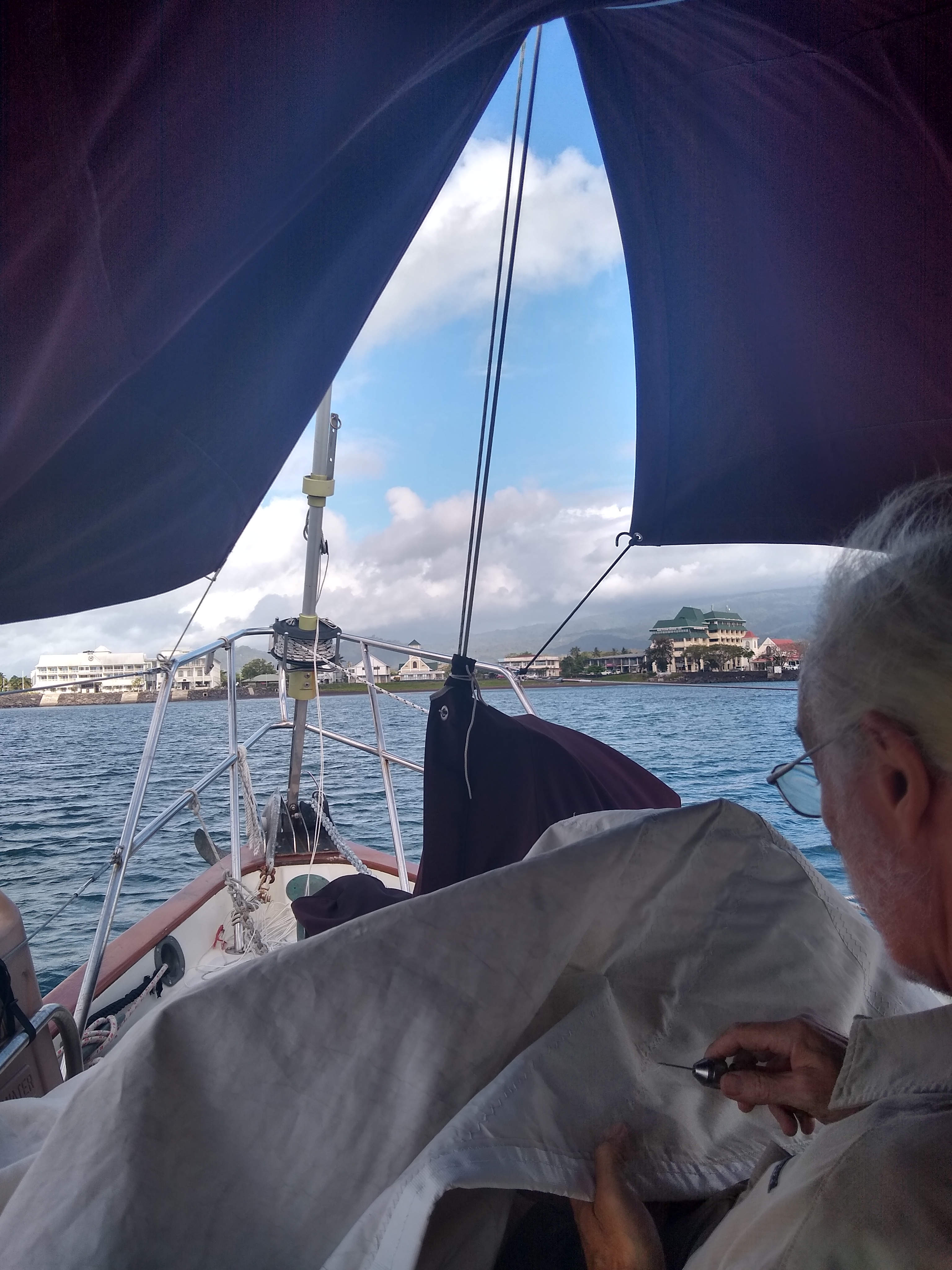
|
|
|
One upholstery shop advertised they could do sail repair, but it turned out they didn't have a machine that could sew zigzag. Zigzag is important for managing the stress between the sail layers and the thread. A straight-stitched seam can act just like the perforations on your cereal boxtop... with a built-in "pull here" tab :-O
|
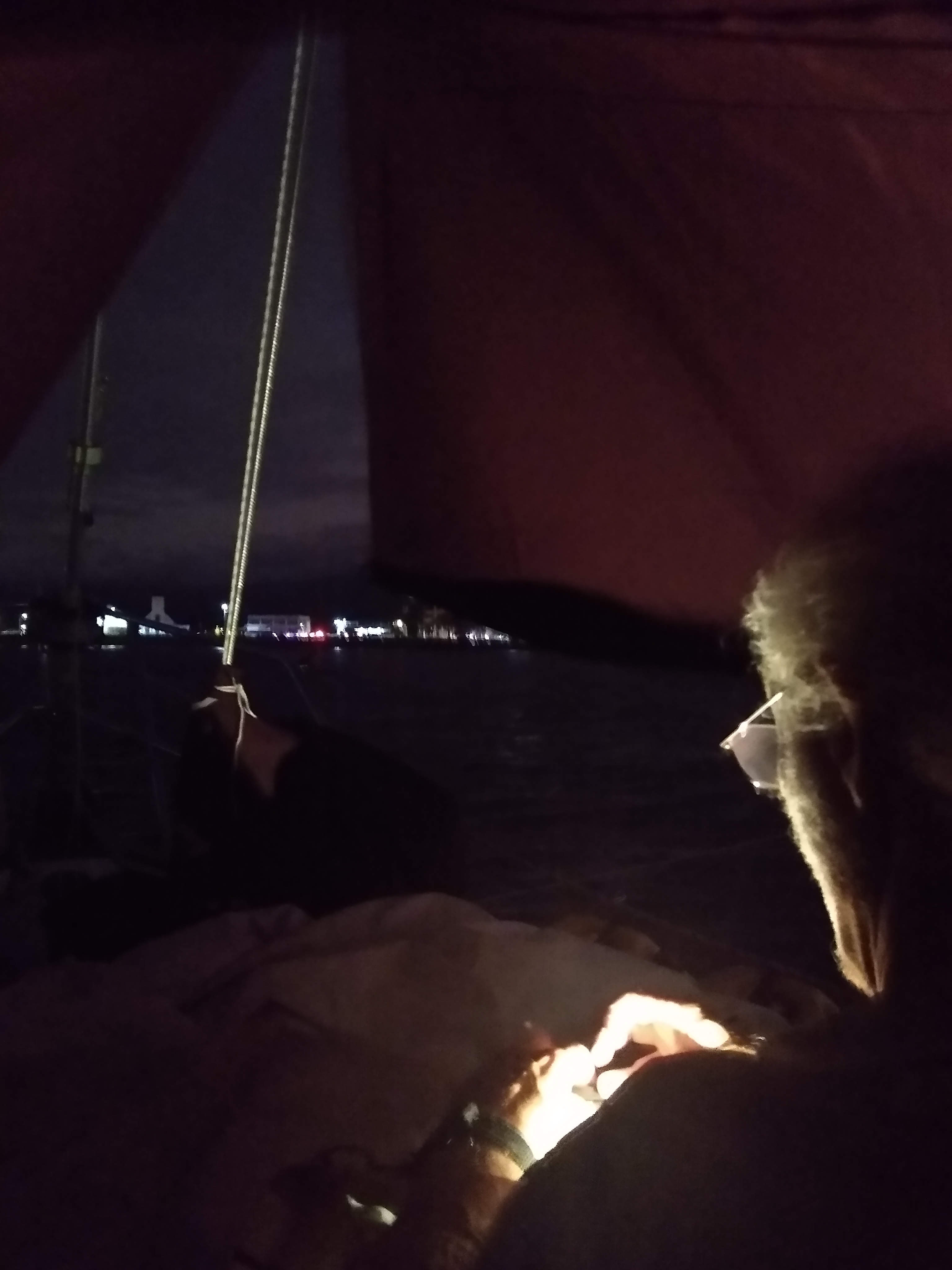
|
|
|
Here is our new Dorade vent for the head. Air is happy to go up and down through its interior maze, but splashing water is too lazy to find its way in (knock wood).
|
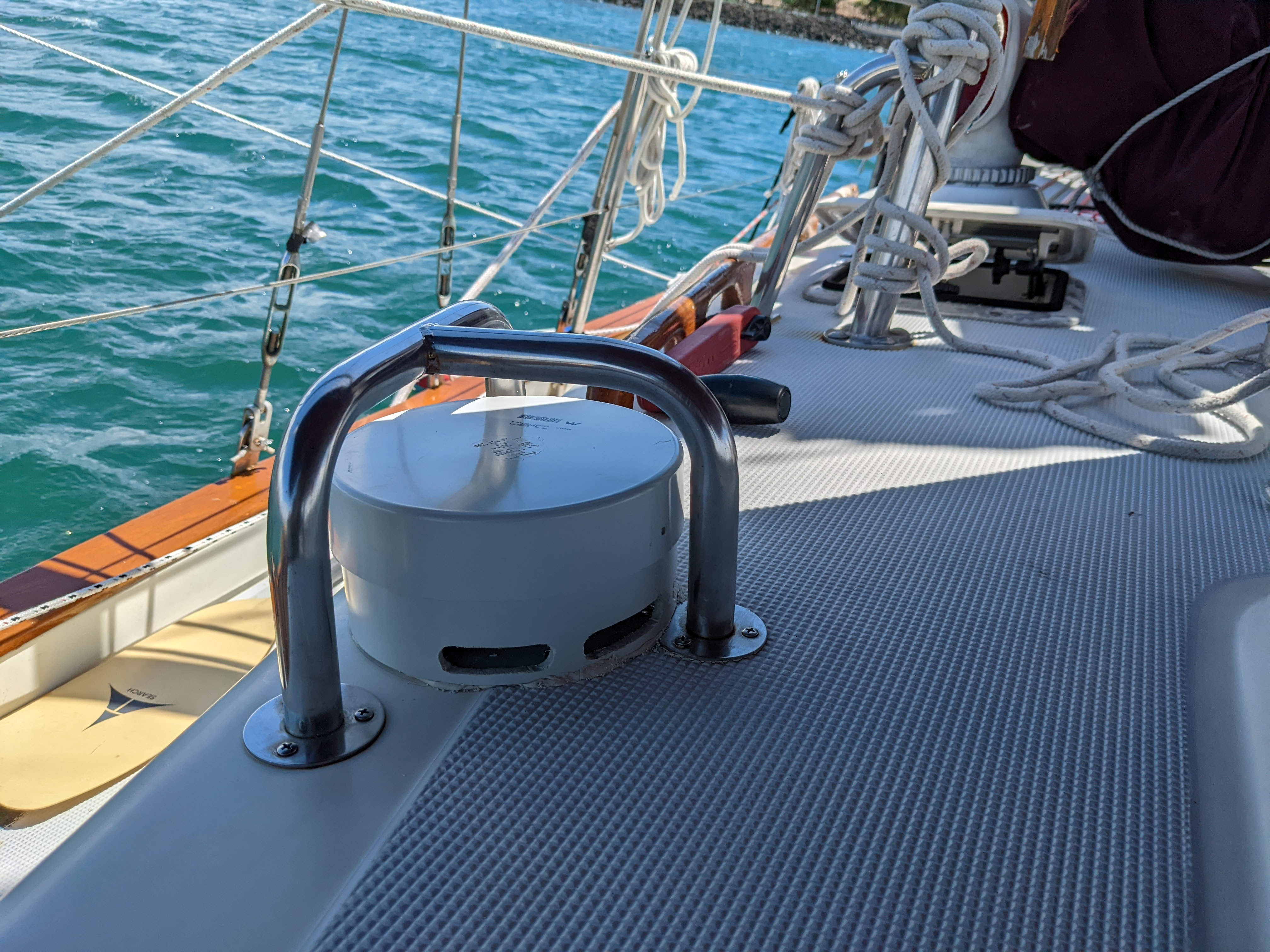
|
|
|
We found these plumbing fittings at a local hardware store. A moment of inspiration flashed: they could become a one-way steet for ventilation to go out of the boat without water coming in.
|
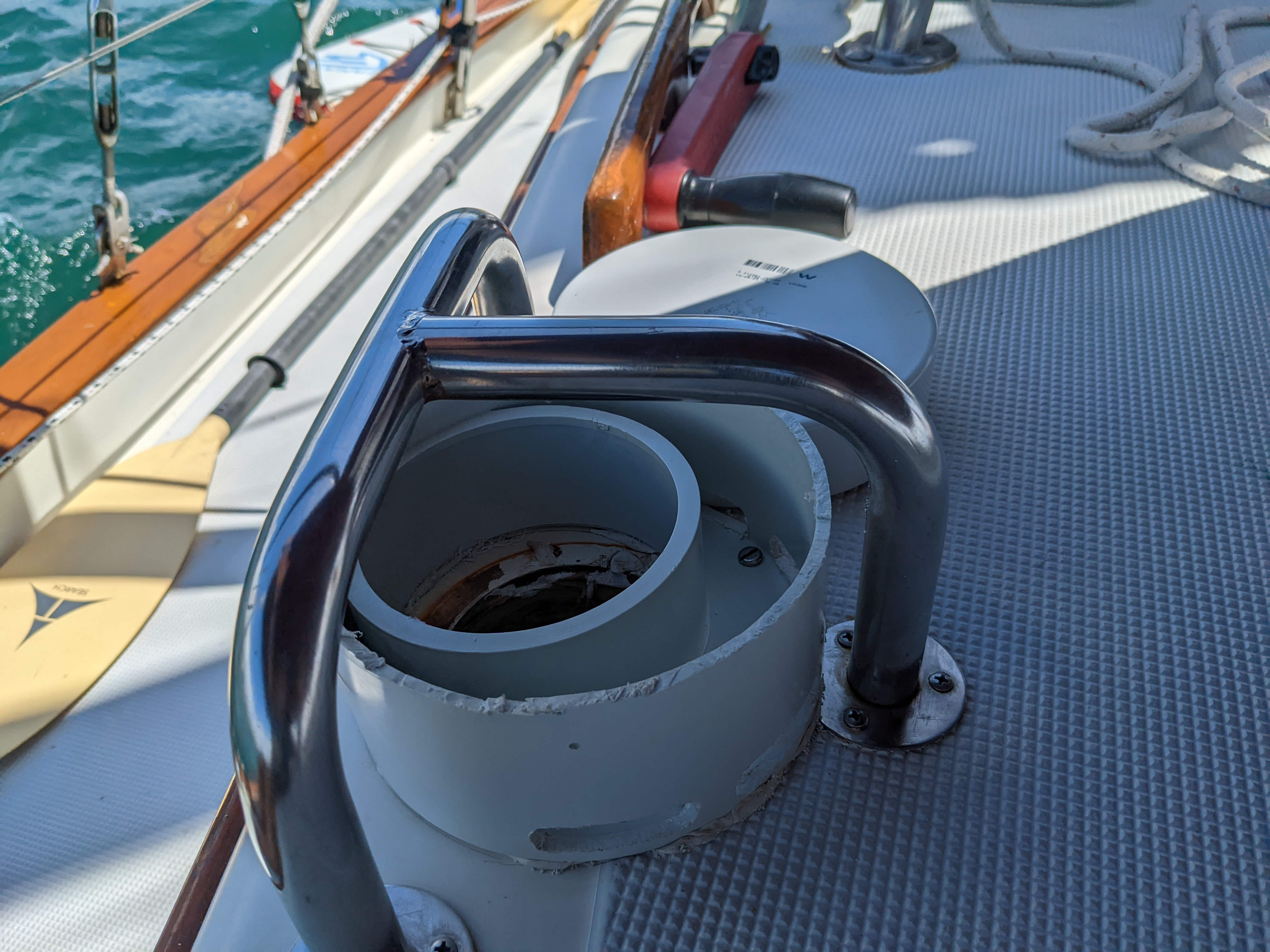
|
|
|
Here are all the solar panels in their new glory. We have used mop handles to spread the stresses of attachment between the arch frame and the panel frames ;-)
|
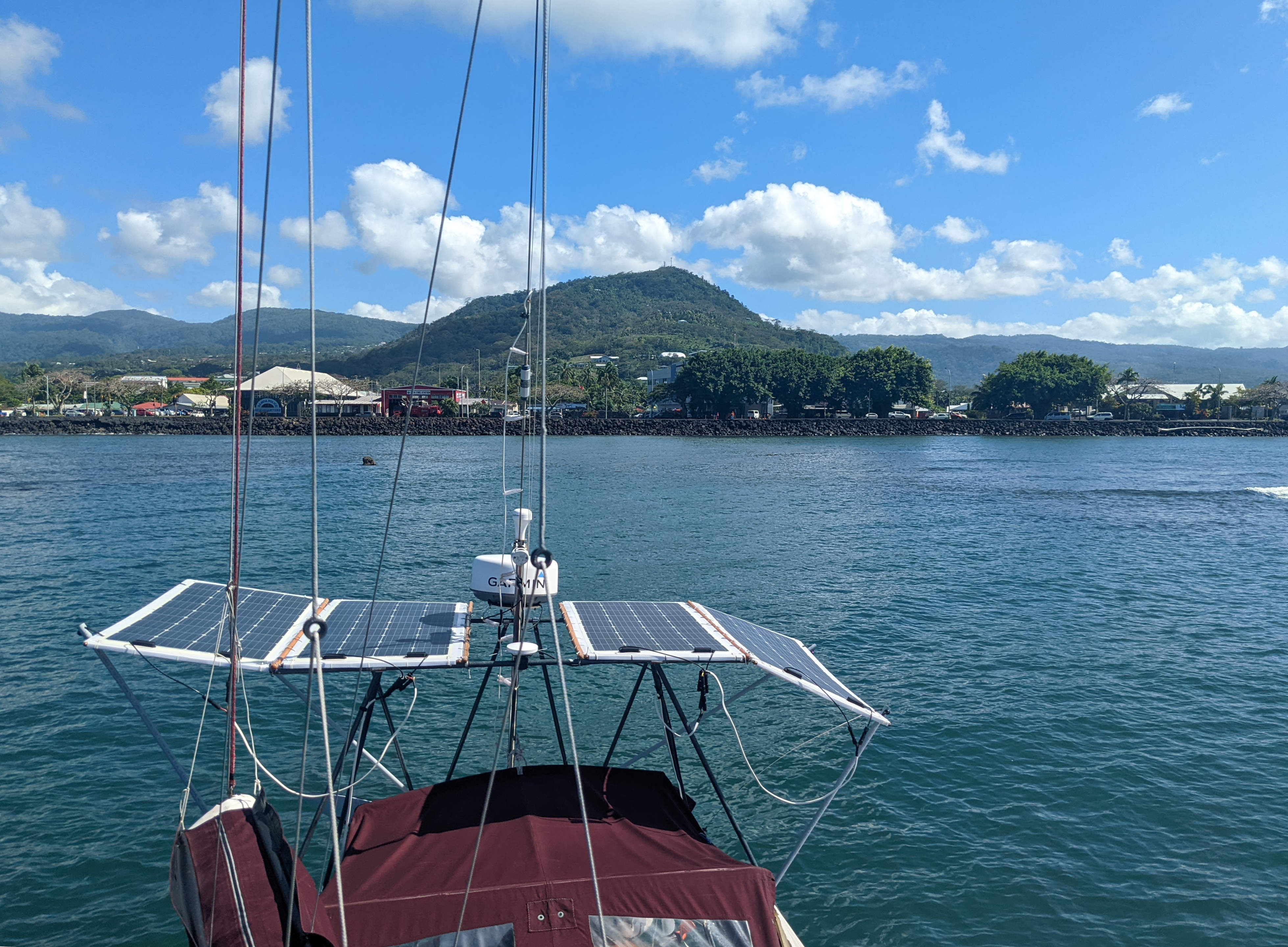
|
|
|
Brooksie came up with a great plan for reinforcing the frames for the solar panels that got beaten up on the trip so far. We found "corflute" corrugated plastic board at a local hardware store, cut to fit, and zip-tied to the lightweight carbon fiber frames and the flexible solar panels.
|
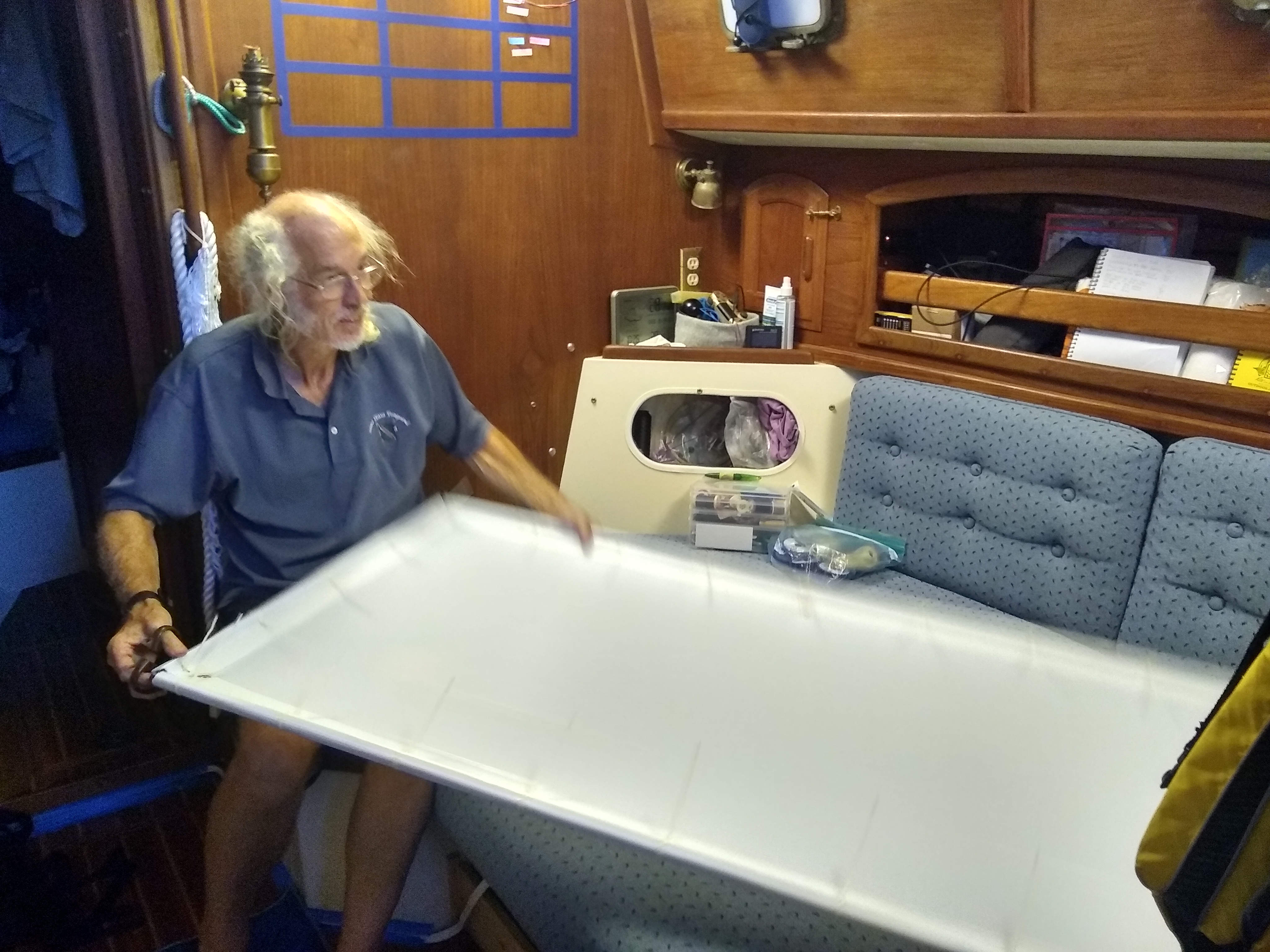
|
|
|
Lizann and Clark went out snorkeling with Al and Lucinda from S.V. Ten Gauge at Palolo Deep. It was a great day, with more varieties of fish and coral than we could count.
|
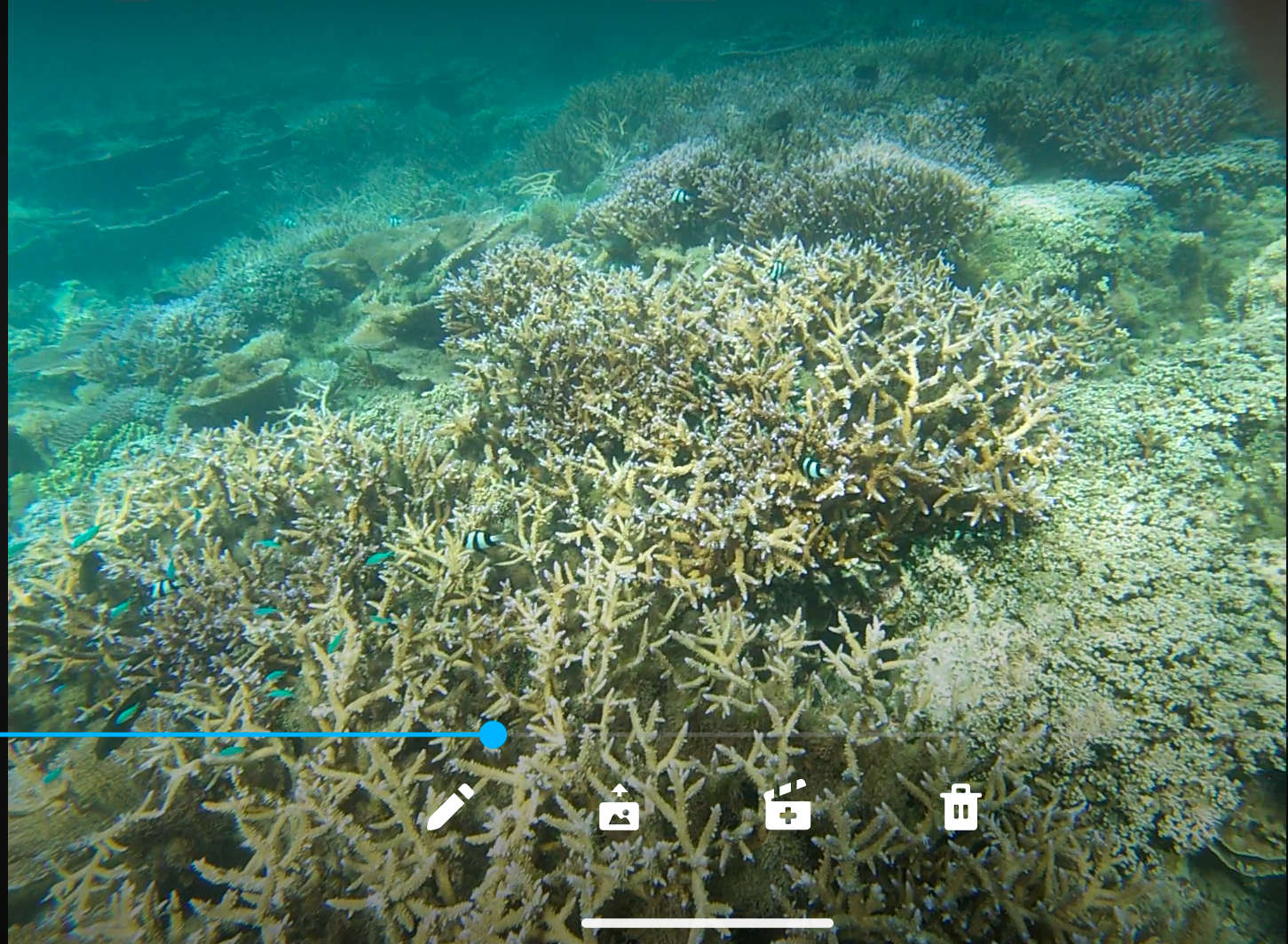
|
|
|
Siva Afi Is celebrating its 20th anniversary competition this year. For the first time, women from three nations will be competing in the fire twirling. This local club puts on a show every Tuesday night.
|
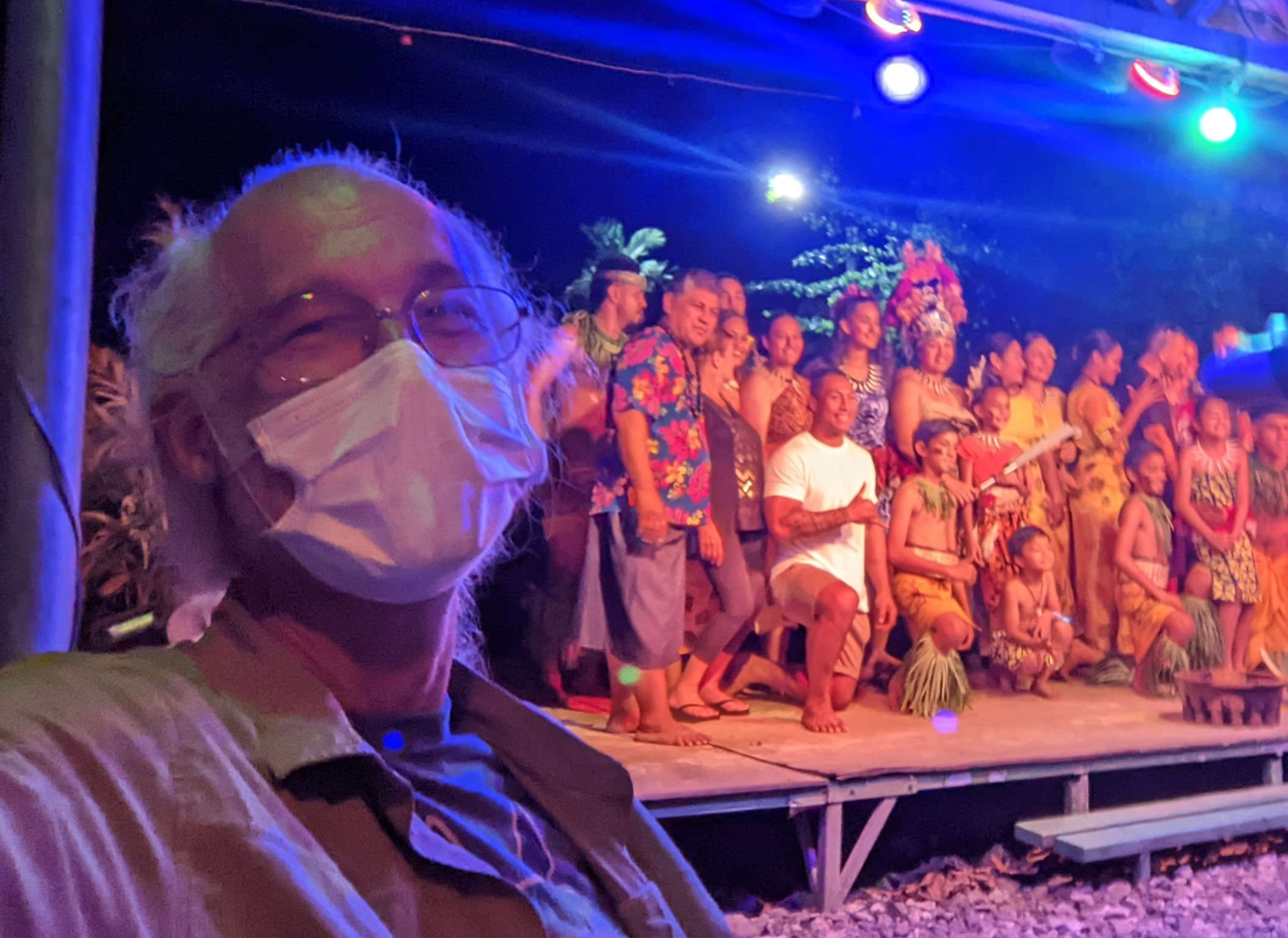
|
|
|
The Apia marina has suffered a lot of wear and tear, and very few customers for the last two years. We pay 100 Tala a week for access to the dock, drinking water and trash removal. We've been using a lot more jerry cans of water per week here than we did on the way down from Hawai'i ;-)
|
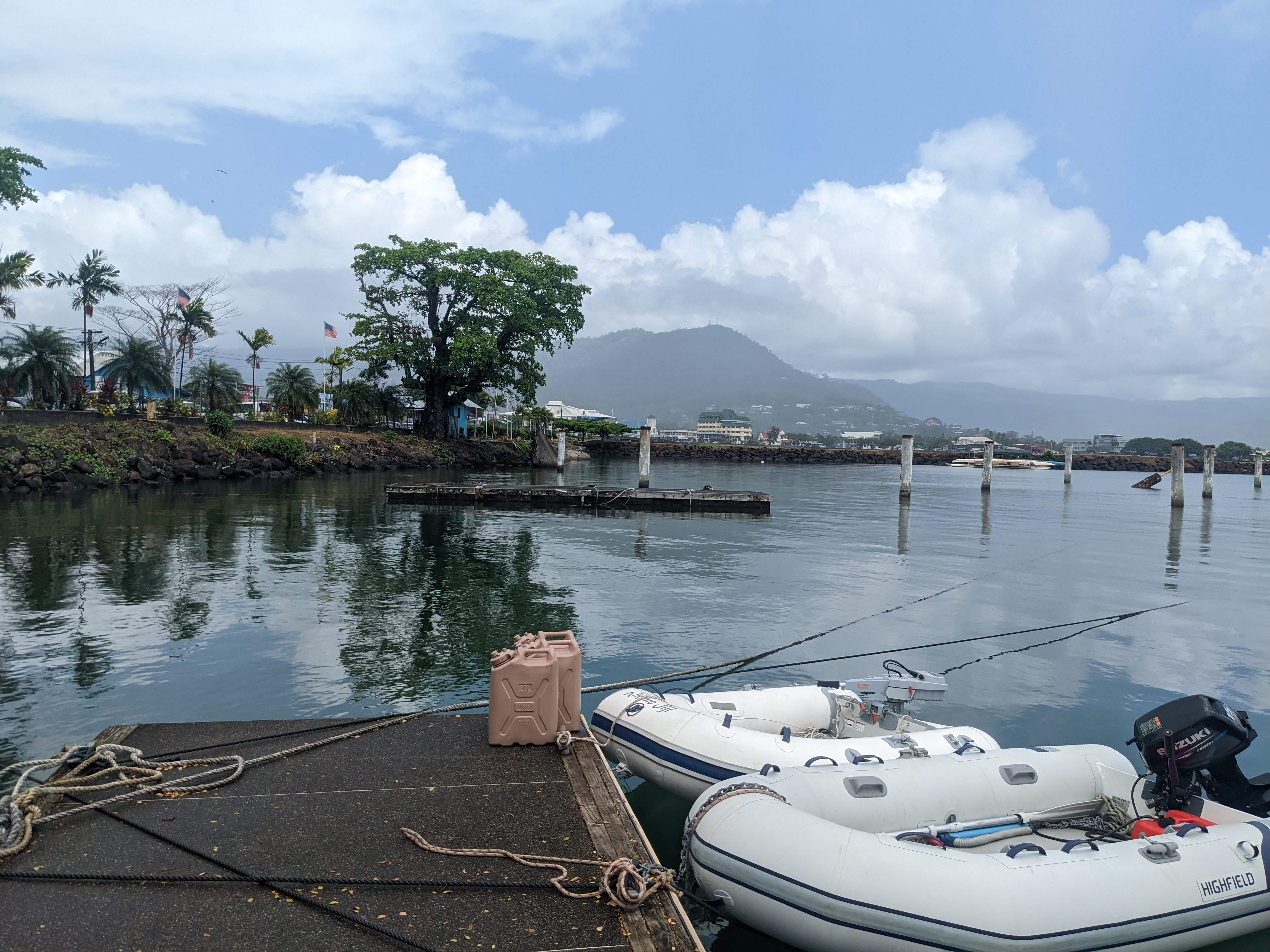
|
|
|
Since we got Kiki, the galley sink has been slightly below her waterline. That remains true so far, but now we can pump the drain water out over an anti-siphon loop and get clean dry sinks that don't smell bad. Huge success!
|
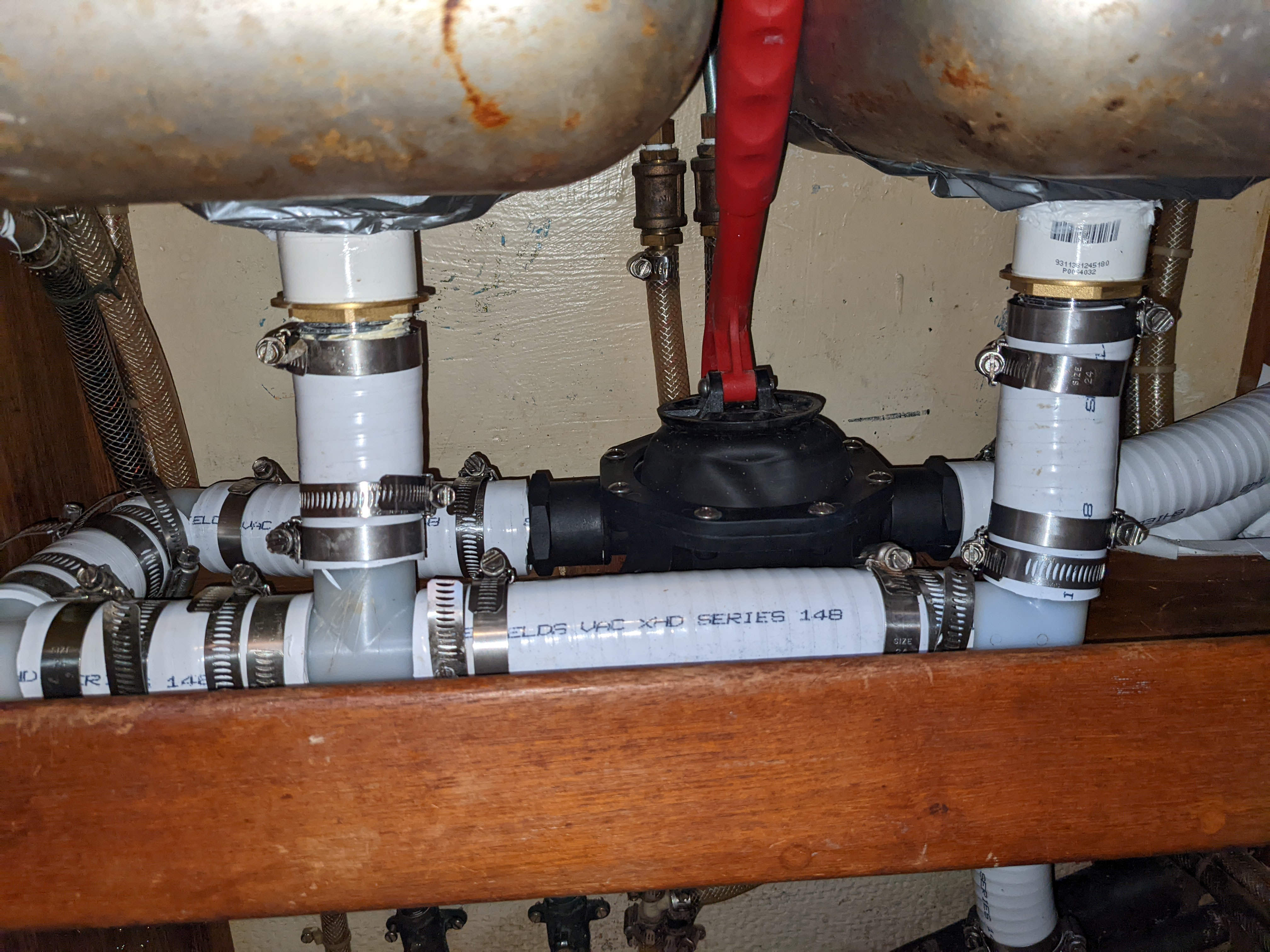
|
|
|
You can almost see Kiki anchored over near the Cathedral. Kiki no Jiji has been faithfully delivering us back and forth to the dinghy dock and the city attached thereto. On the left, you can see some of the local outrigger canoers, alongside their support boat.
|
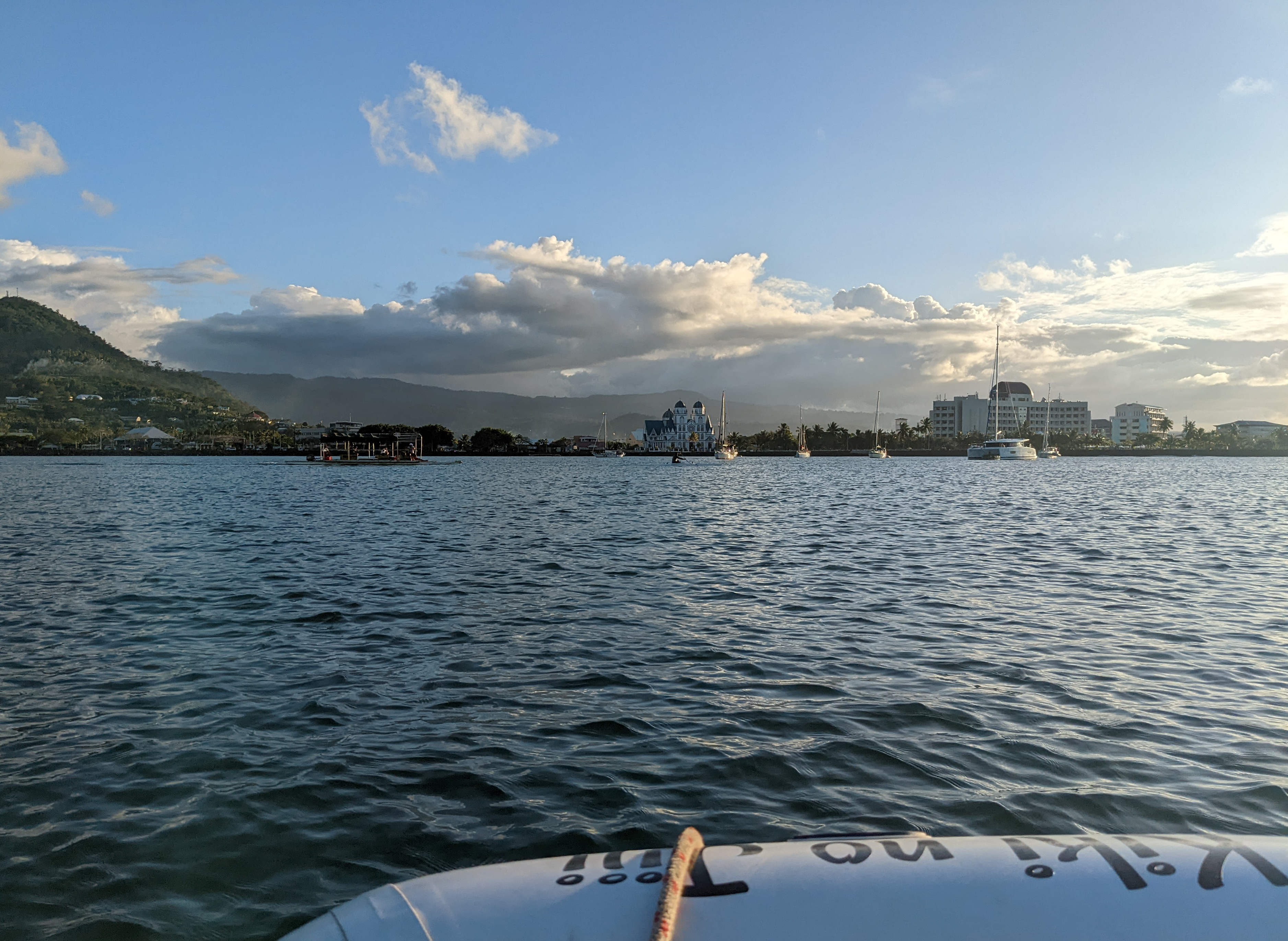
|
|
|
You might recall how we happily installed our solar MPPT controllers in the pilot berth... On our way to Samoa, we began having trouble with those same solar controllers. We just couldn't seem to get a full charge out of them no matter what we did. Not being able to charge the batteries properly made for some exciting times during the crossing. Many discussions ensued, and we finally decided that resistance "noise" in the wire between the batteries and the controllers might be confusing the controllers into thinking they were done charging. As little as 0.03 Ohms of resistance could do it. So we moved the controllers to within a meter of the batteries (under the cushions on the left). We now estimate 0.01 Ohm resistance! Our solar power system has been working MUCH better since this change.
|

|
|
|
About a week after we got to Apia, we all were laid low by fever and digestive ailing. Thanks to the Biden administration and Phill, we had a cache of home COVID19 tests. We all tested negative, which was a relief, even though we remained ill. By now, we are all feeling well.
|
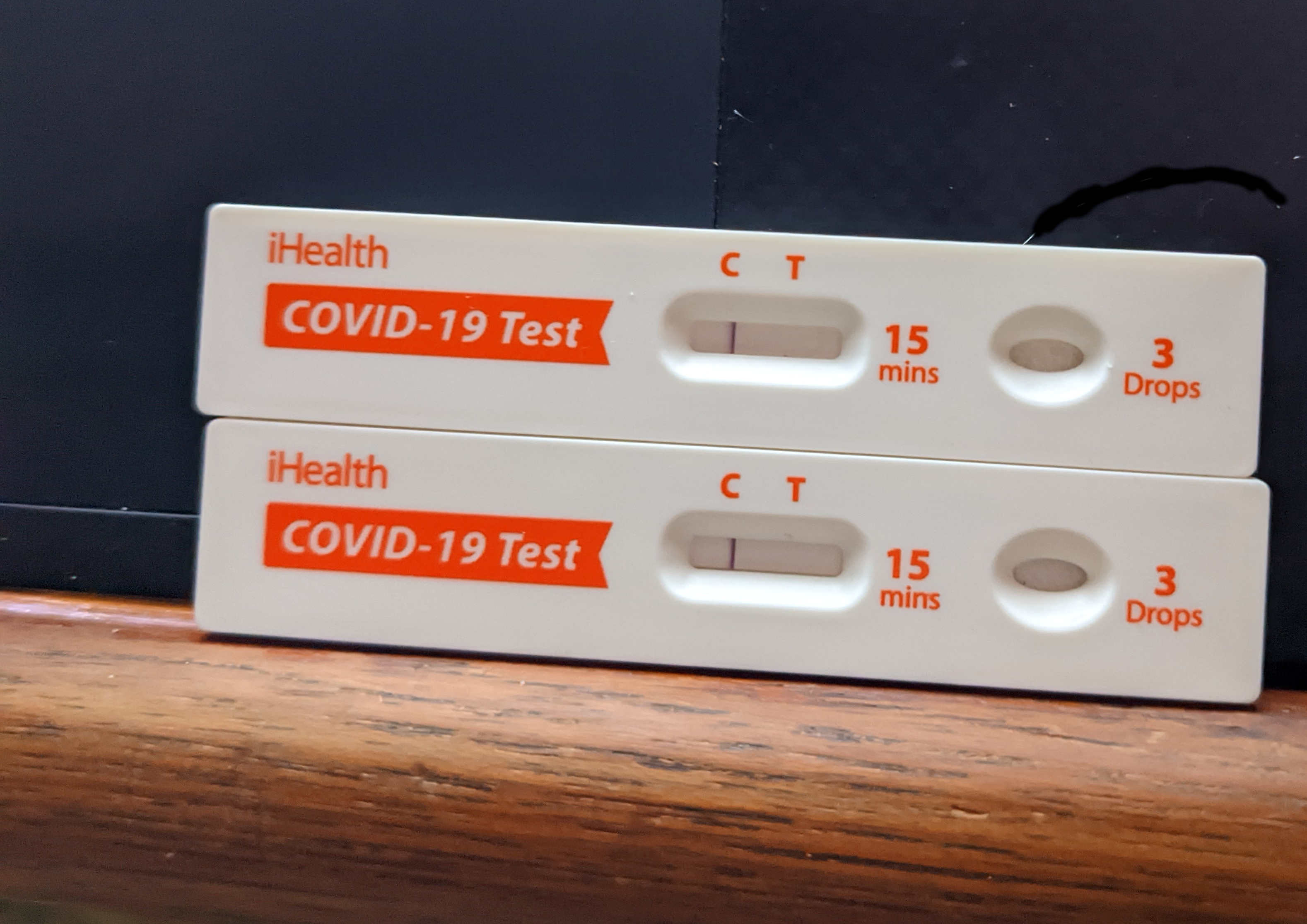
|
|
|
It has rained on us practically every day we have been in Samoa, usually in the middle of the night :-) Since ventilation is a priority in 33C (91F) weather, we leave the hatches open when we go to bed. So, someone has to wake up and close the roof hatches when rain starts. It rains even more frequently in the foothills, to the south of Kiki, delivering views like this. The big white building is a largely inactive Sheraton Hotel.
|

|
|
Our trip so far. Kiki's ocean passages are marked with a pin for her location at noon each day. Blue pins for the trip from San Diego to Hawai'i, and olive pins for the trip from Hawai'i to Samoa. Grey pins mark places we intended to visit, but missed. Nuku Hiva gets a grey pin because weather made us think we would not safely sail that far. Kiritimati gets a blue "grey" pin because we thought we could skip beating into wind and current to go to Tabuaeran. Tabuaeran gets a grey pin because of COVID. Penrhyn also gets a grey pin because COVID. Pago Pago gets a grey pin because why go to another American territory? Minerva Reef and Opua get gold pins because we still intend to go there :-)
The zigs and zags hint at our melodrama. At the end of this "olive" passage, we added a little dogleg to avoid arriving in the dark; this did not actually work. In the middle of the passage, we tried to sail to Kiritimati, tried to enter Tabuaeran, and settled for cruising all the way to Samoa. More details below.
|
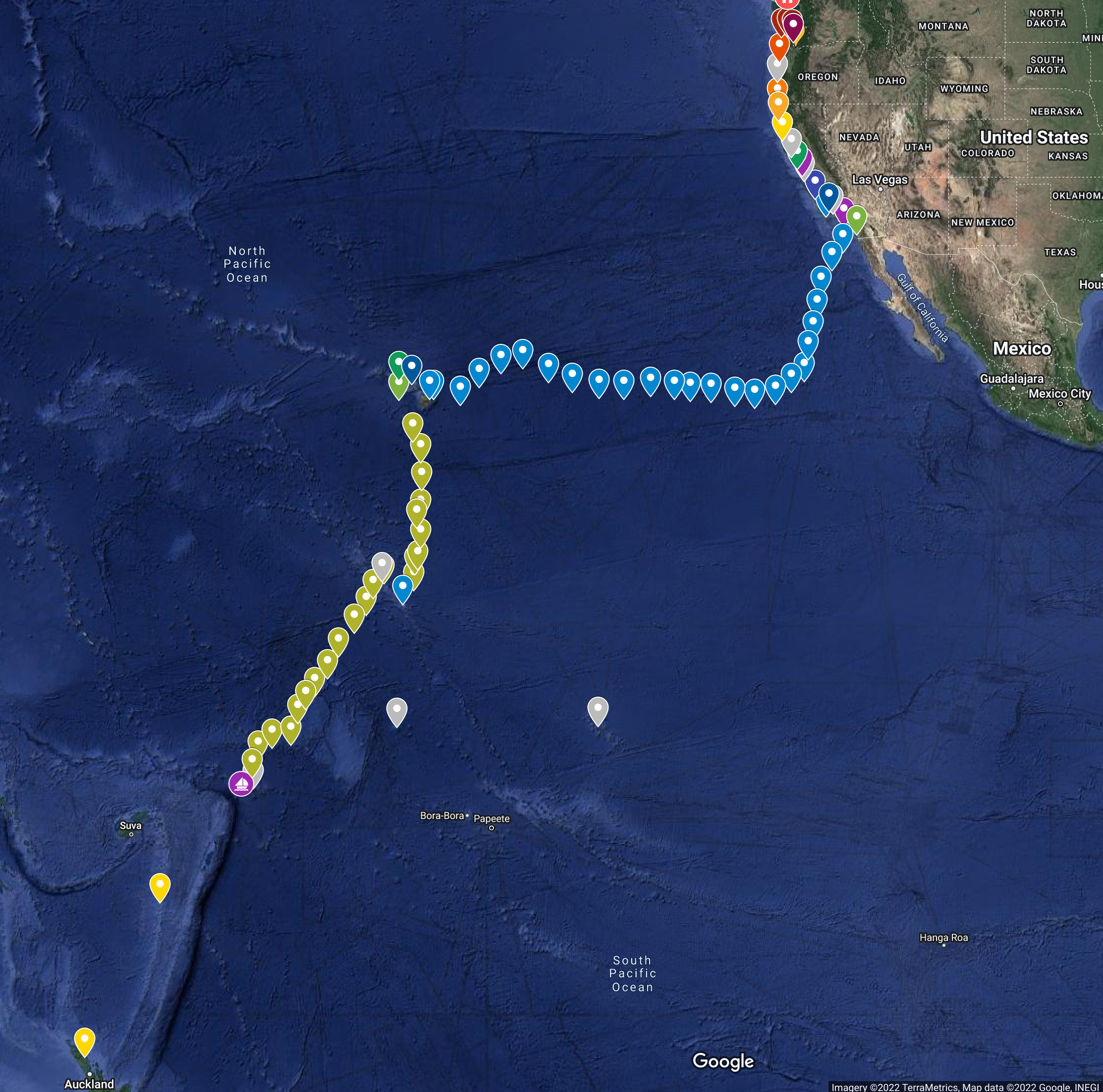
|
|
|
Lovely Apia harbor reminds us of Avalon. The police have a marching band that parades up and down the waterfront every day. Clearing customs, health, and quarantine has taken days. They have been lovely days. We are nearly down to rice and beans, with the promise of roast pork ashore as soon as formalities are finished.
|
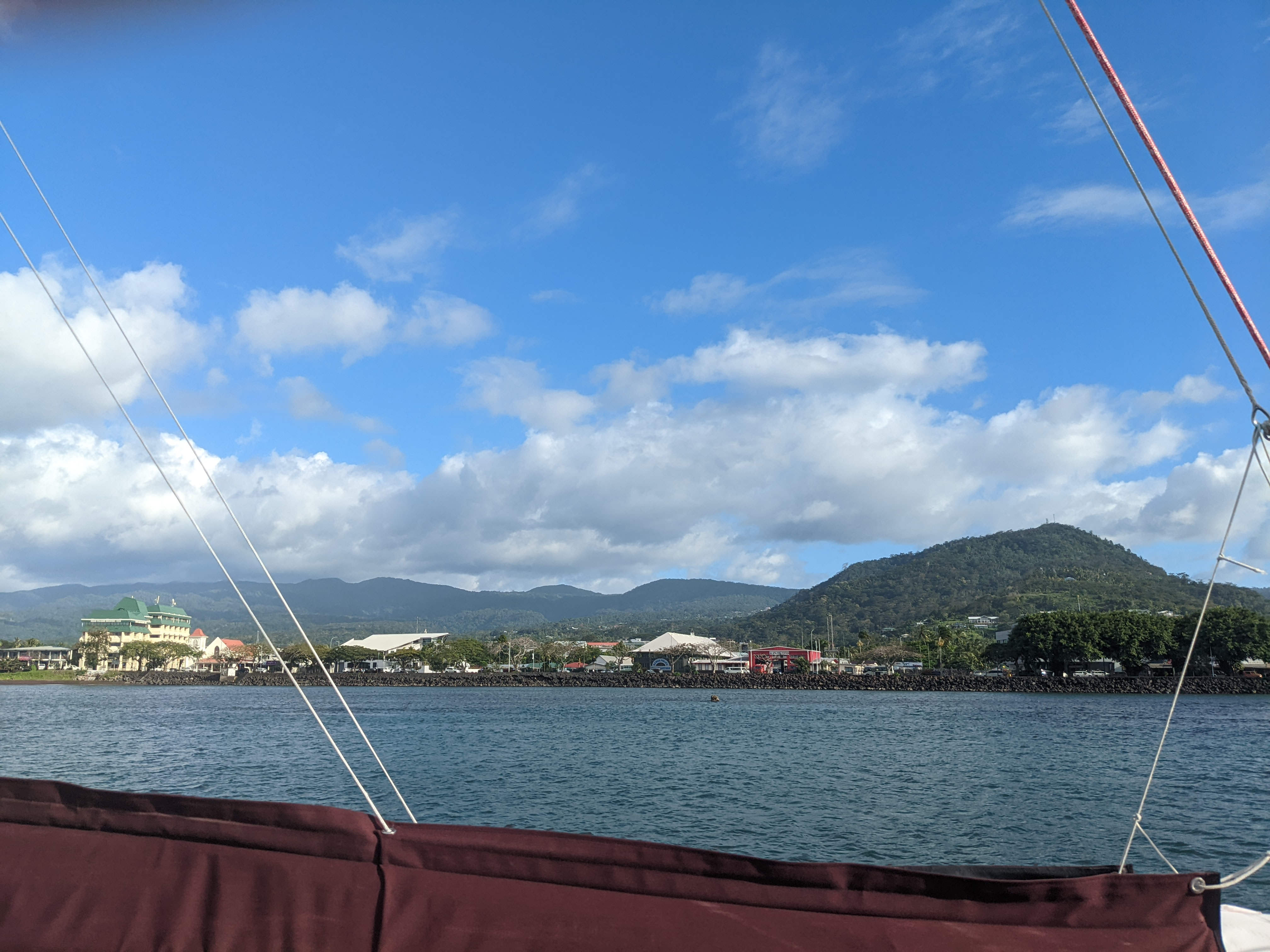
|
|
|
We waited until daylight, when we could get permission, to enter the harbour. Our buddy boat, Ten Gauge, made the connection, since our VHF radio didn't have enough range to talk to the portmaster from outside. A couple big ships took up the space and time at the harbor entrance. Winds were strong, eating up our fuel as we tried to keep station.
|
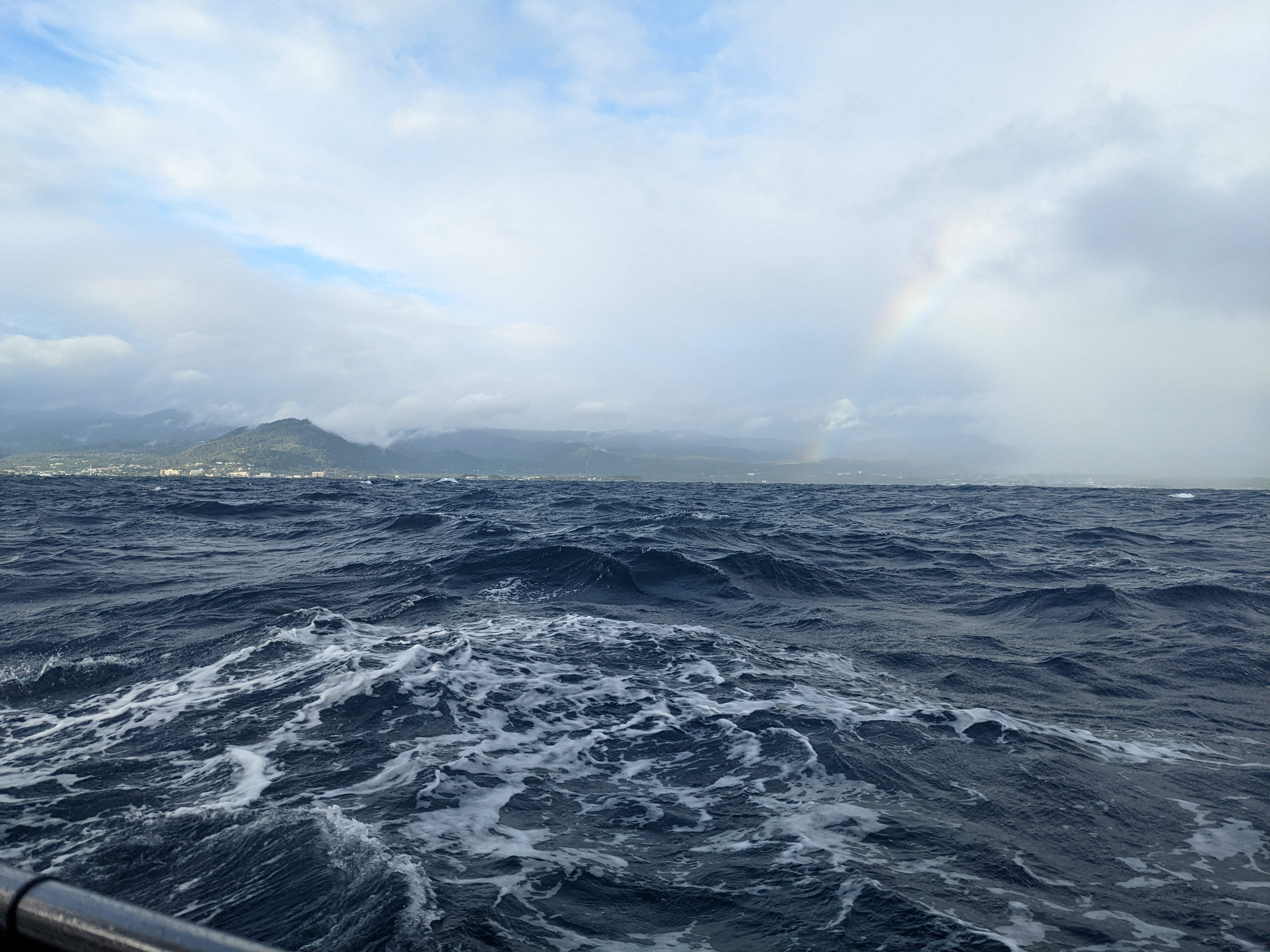
|
|
|
Our fuel gauge told us we didn't have enough diesel to motor into the harbour, so we boosted it from our reserve jerry cans.
|

|
|
|
Naturally, our first sight of Samoa came in the middle of the night. The lights of Apia were often obscured by squalls as we approached.
|

|
|
|
A spectacular south pacific moonrise. This picture taken shortly after we crossed the equator and petitioned Poseidon to become shellbacks
|
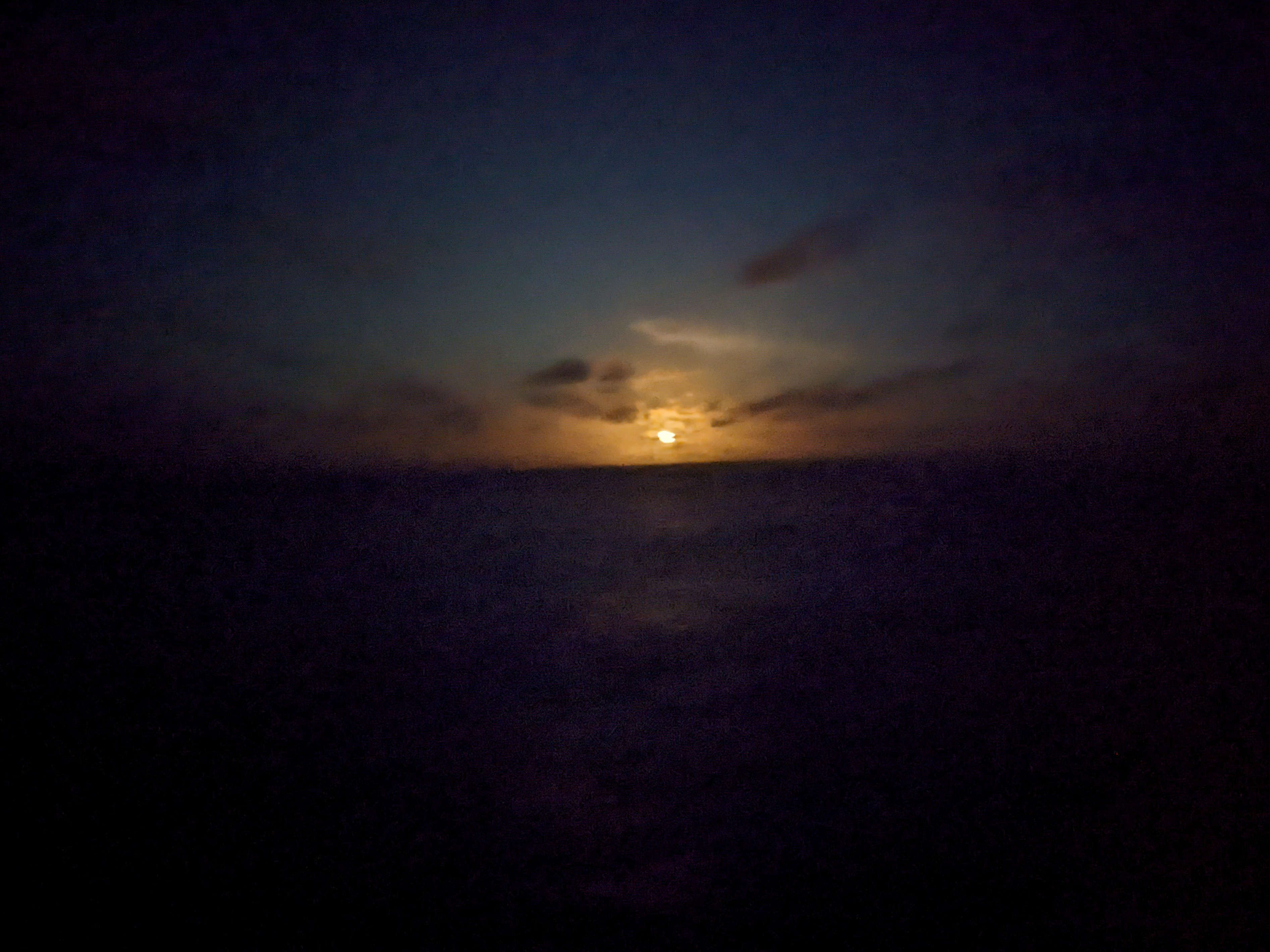
|
|
|
Lizann demonstrates her wizardry at setting the monitor windvane "feather". This requires checking the wind angle, steering the boat, adjusting the feather angle, and locking in the adjustment - pretty much all at once. No recordings were erased. (Please attempt to forgive this ancient and obscure reference to a more civilized age)
|

|
|
|
After leaving Kiribati waters, we spent several days and nights running downwind wing and wing with our jib poled out.
|
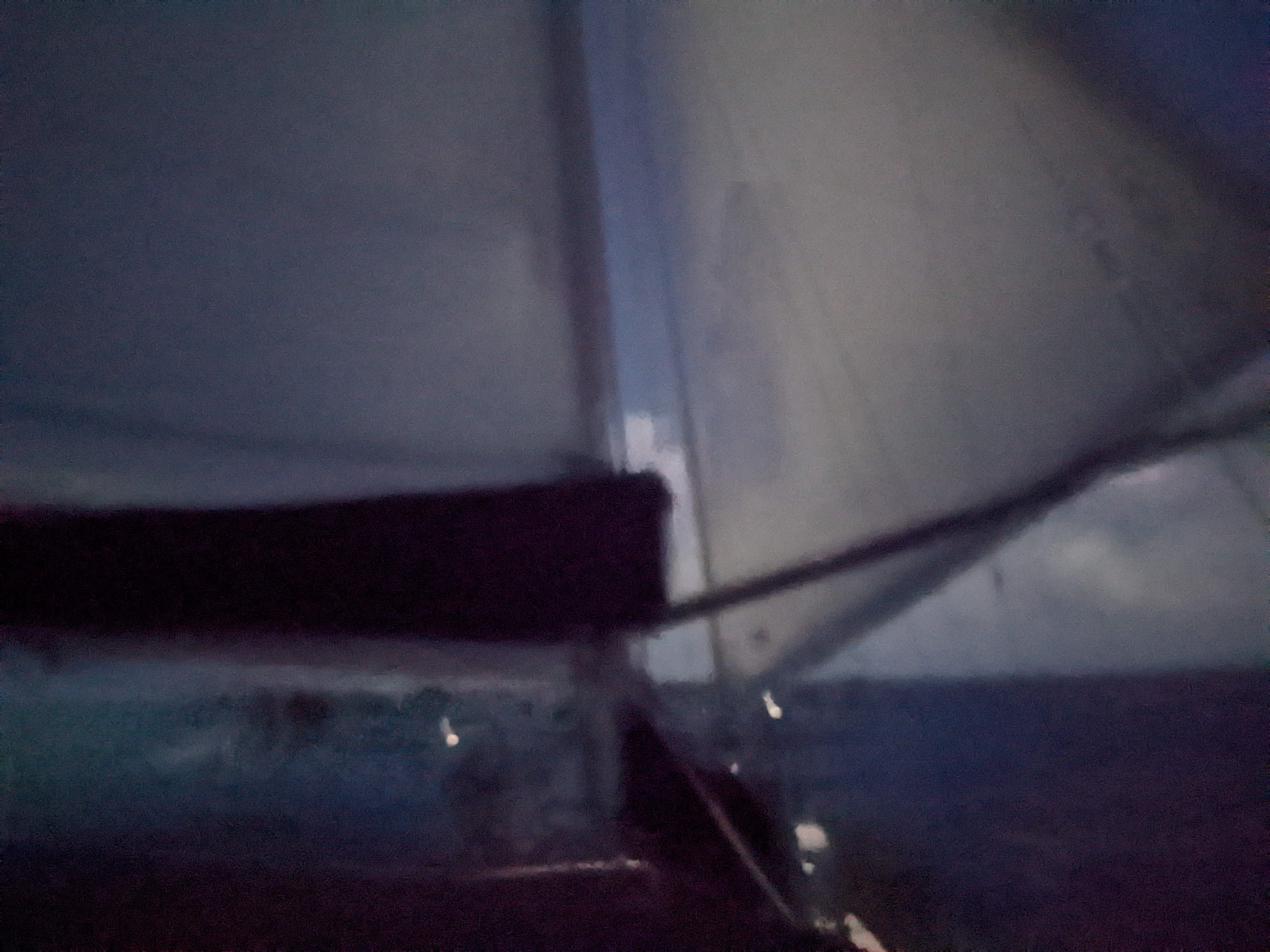
|
|
|
Half of our sailing has been at night lately. The monitor windvane makes it tolerable.
|

|
|
|
Captain Lizann, hard at work during "golden hour".
|

|
|
|
Kiki is a lovely boat, and she got us safely to harbour.
|

|
|
|
After redirecting from Kiribati, we had to inventory our food again. We also had to take measures against the spilled water rusting out the cans. Every compartment that we stored canned food in got unexpected water, one way or another.
|
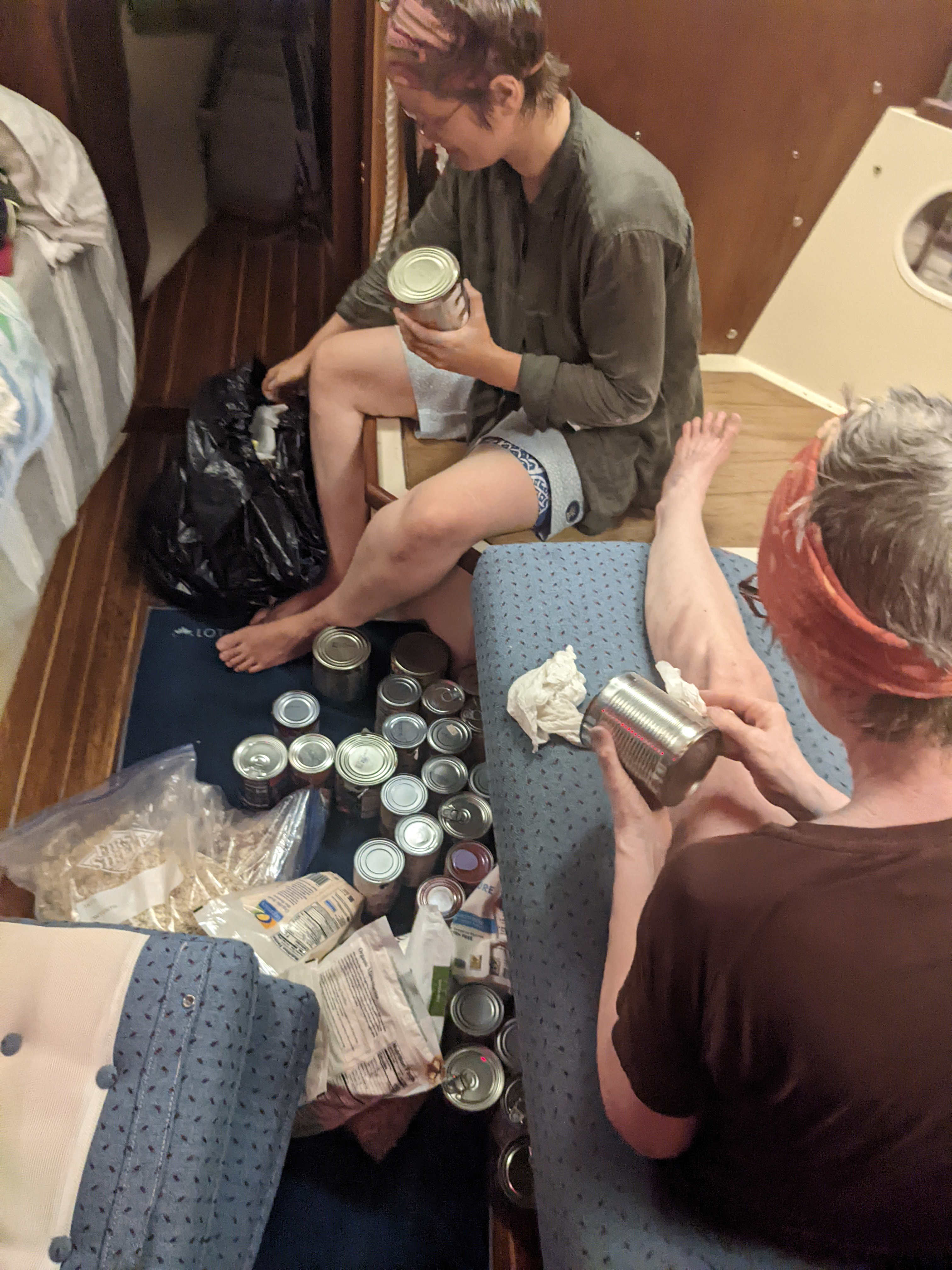
|
|
|
Tabuaeran turned out to be tabu for us. Altough the country of Kiribati was open, its island of Tabuaeran was closed. We though we could sail one more week to Penrhyn in the Cook Islands, but they were closed as well. Next on the way to New Zealand is Samoa... so much whiplash. You can see buddy boat Ten Gauge on the right.
|
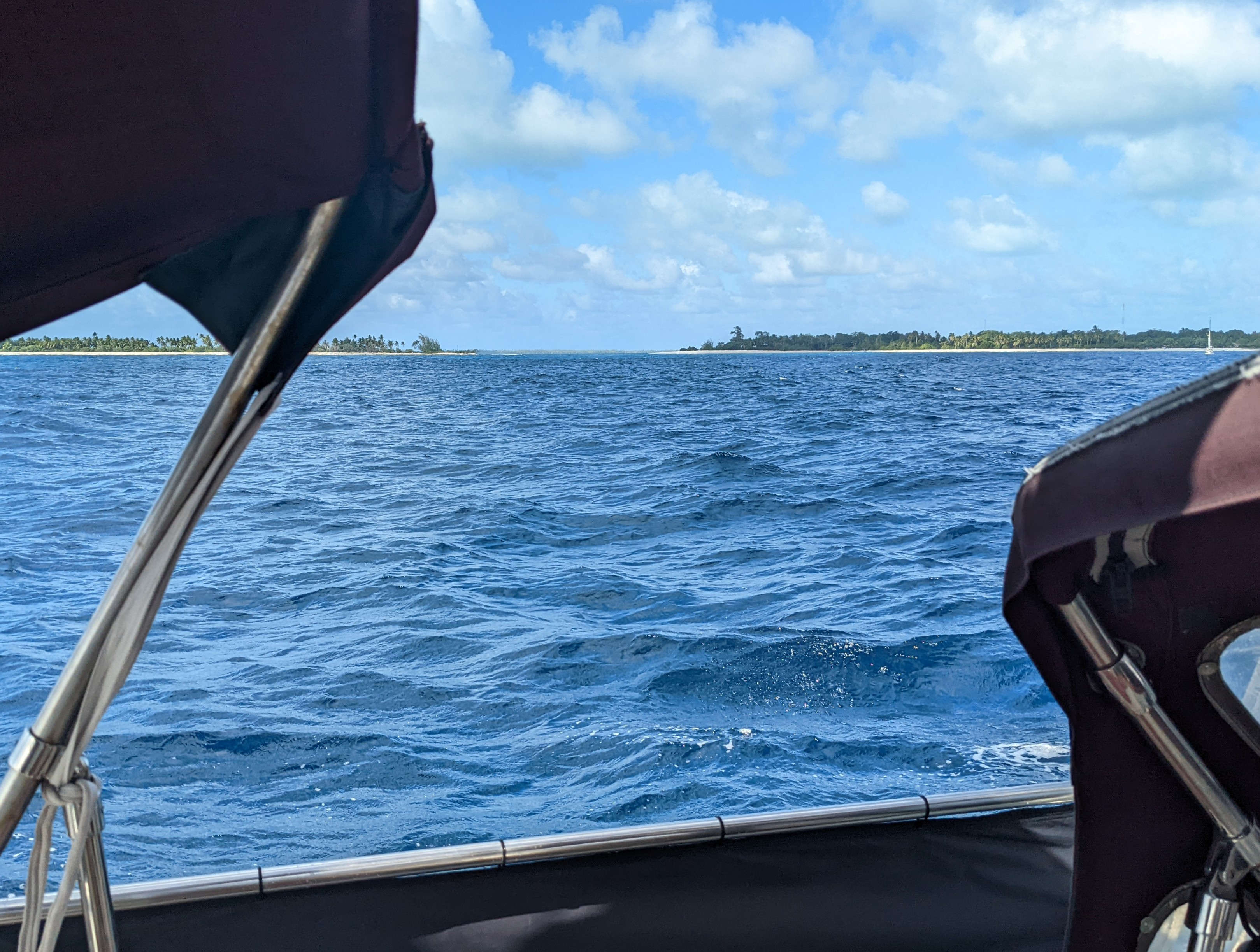
|
|
|
A lovely sunset as we think we are nearing our first stop on the trip. Oops. At this point we had not yet run into the contrary current and headwinds that would have us make 30 miles of progress over the next 24 hours. We tried motoring close enough to Kiritimati to sail down-current to port. Ten Gauge suggested going straight to Tabuaeran (aka Fanning Atoll), which has much better anchorage.
|
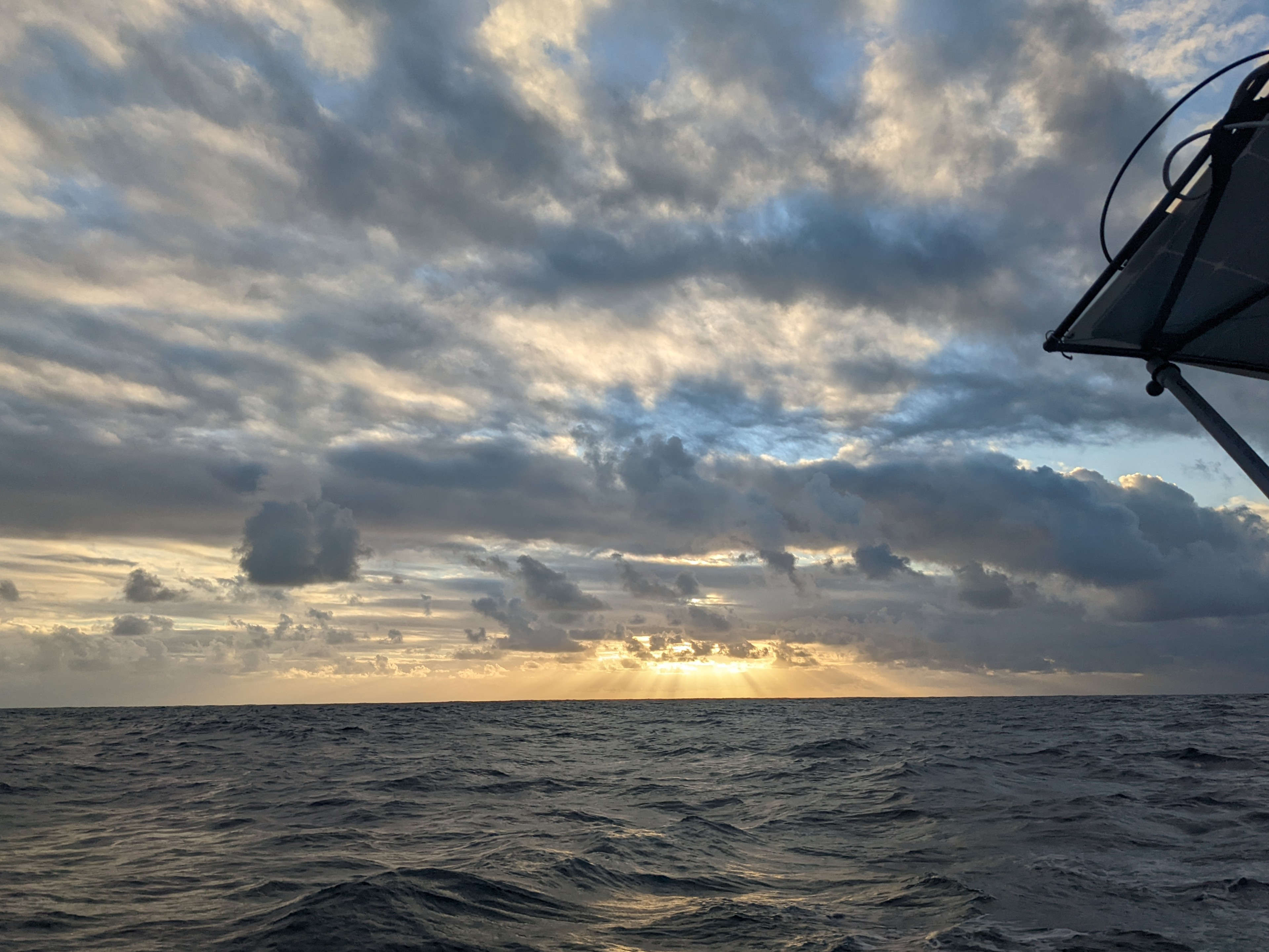
|
|
|
We spent the first week out from Honolulu on
port tack.
You can see the impact. You don't want to see the impact it had on our plumbing, which included spilling most of our drinking water into the sea. On the way to the sea, it moistened many things we had hoped to keep dry :-( "No worries", we thought, as we were on a one-week
trip to Kiribati...
|
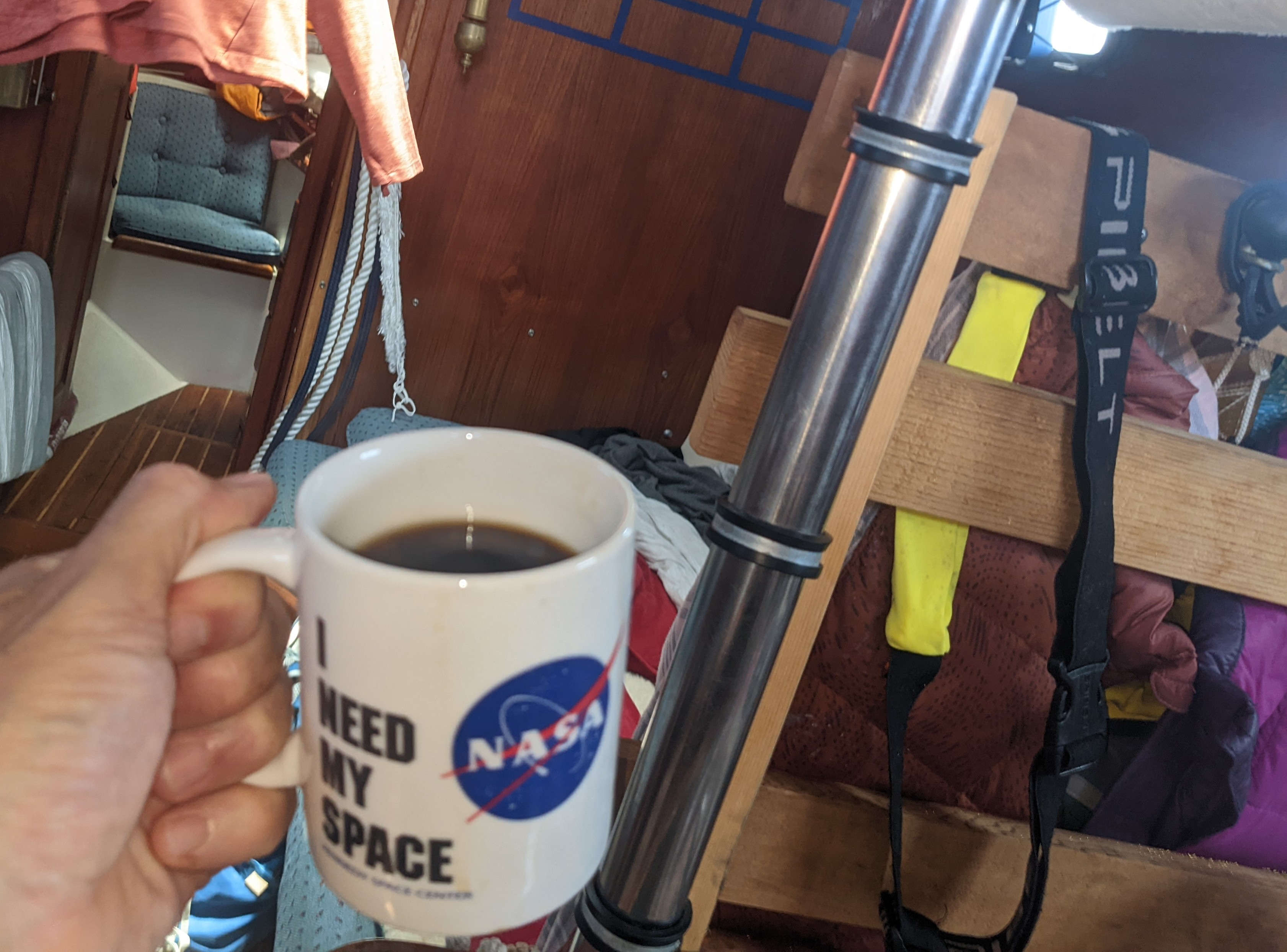
|
|
|
Here we are on the beach at Waikiki. We spent a week parked a few hundred feet west of here, and only found time to visit the world famous tourist spot at the very end. We shopped for food, water, fuel, propane, hardware, computer repairs, and a new main halyard.
|
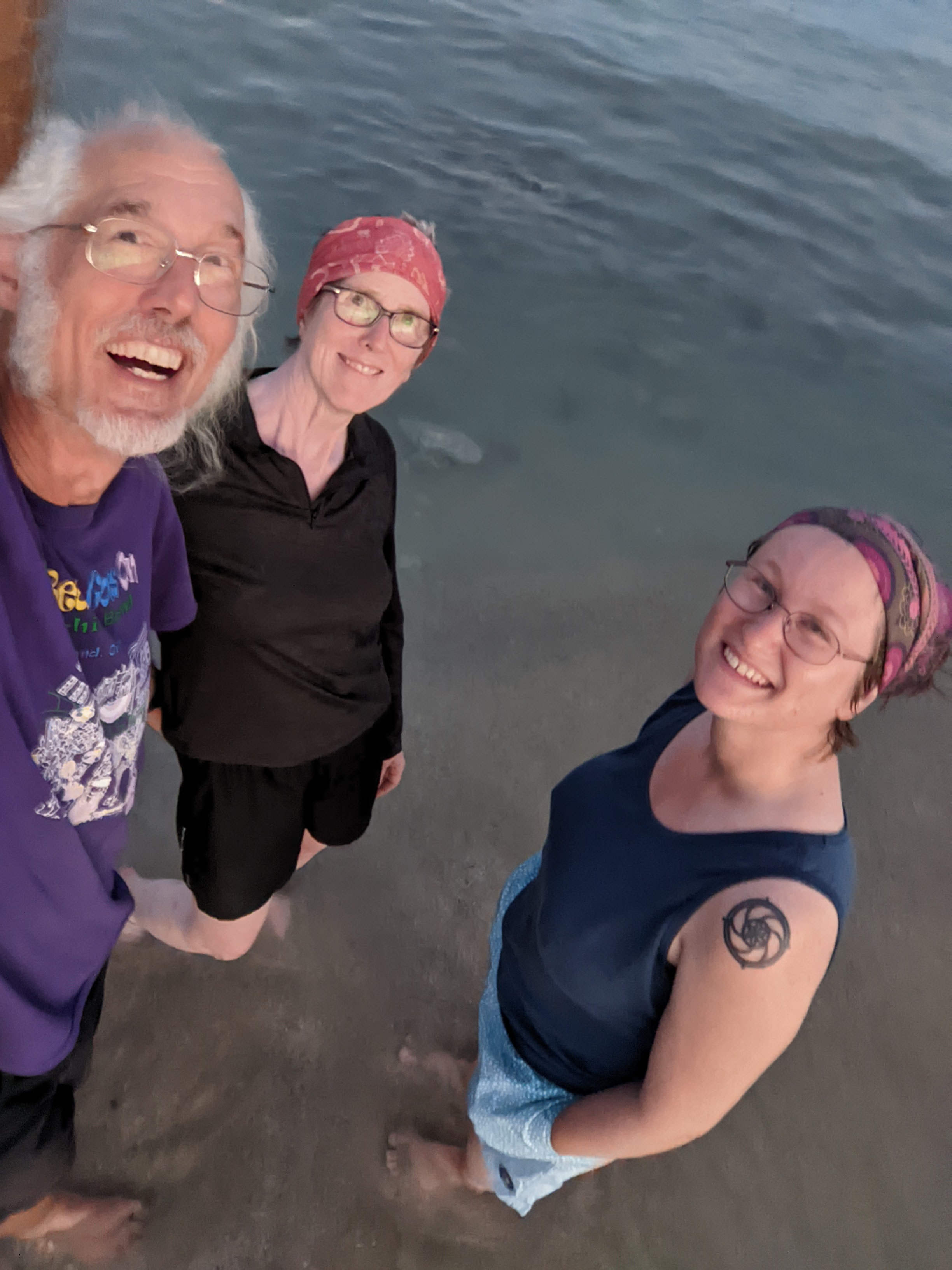
|
|






















































